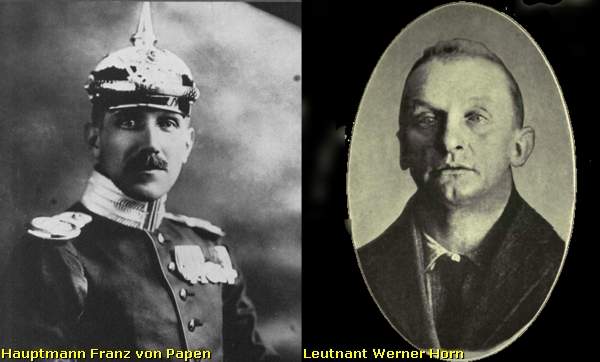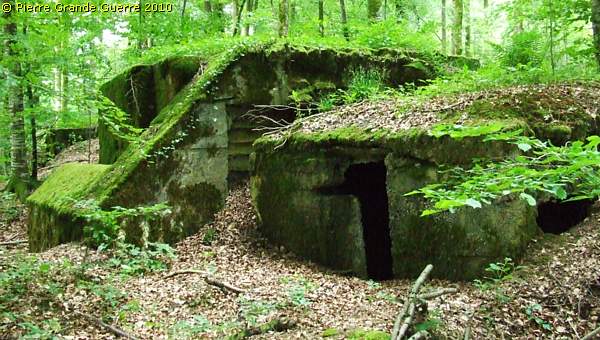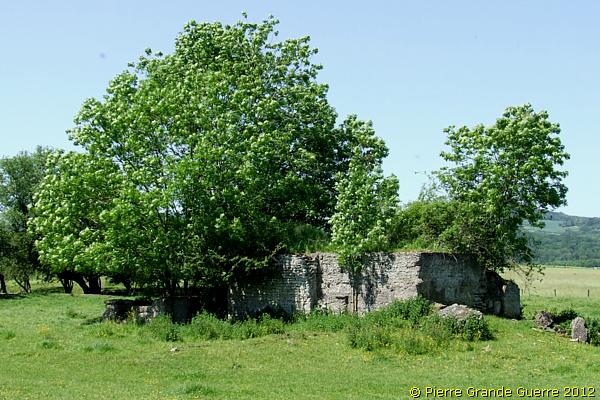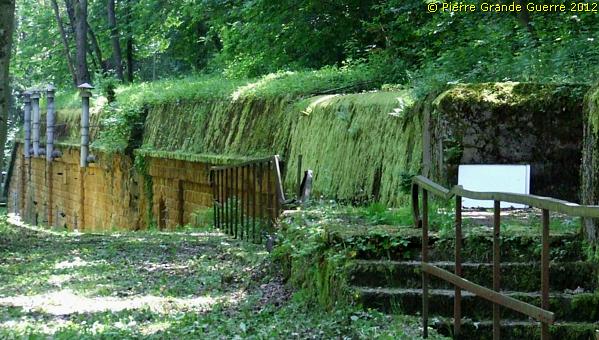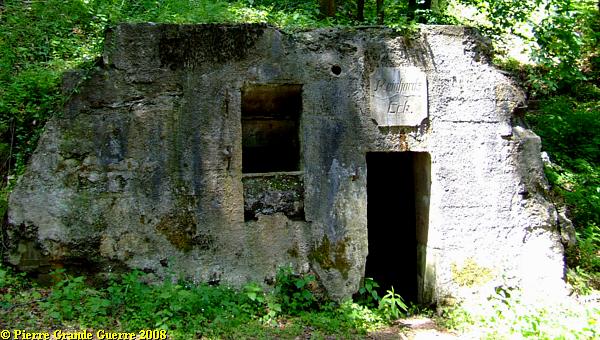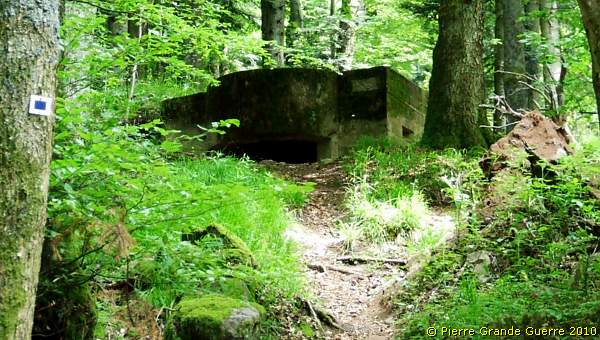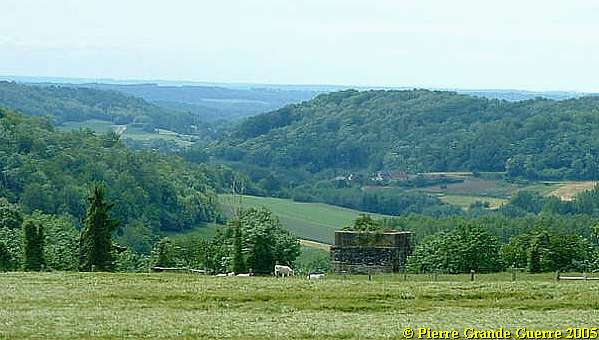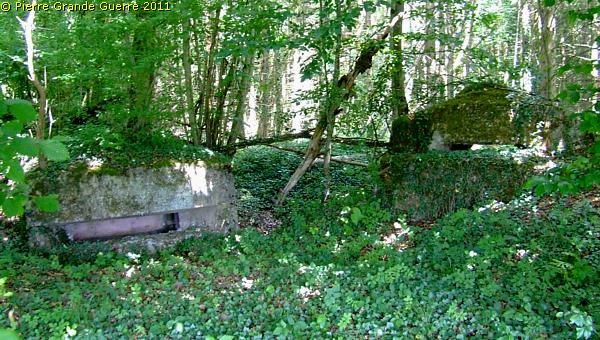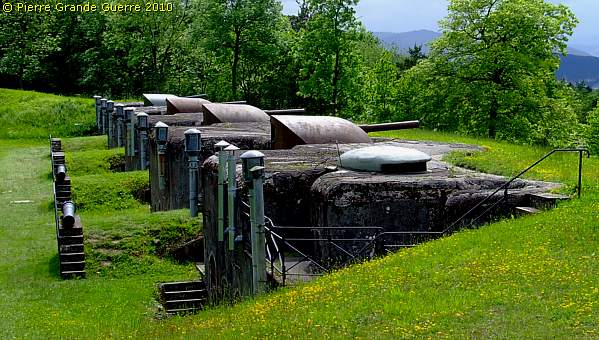LORRAINE - The Battle of Morhange - 1914
Year of visit: 2012

North-east of Nancy, east of Pont-à-Mousson, and south-east of Metz we visit the battlefields of the Battle of Morhange of 14 until 20 August 1914. We follow mainly topographically the route of the French advance eastward over the Franco-German border of 1871-1918.
During this visit, we try to focus on the day that the momentum of the battle switched from the French side to the advantage of the Bavarian side: the day of 20 August 1914, when the Bavarians rapidly re-conquered the territory around Morhange , being also the day of the start of their rather successful “Schlacht in Lothringen”.
We will visit beautiful landscapes of the "Parc Naturel Régional de Lorraine", memorials, ossuaries, and cemeteries. Sometimes we will divert to other periods of the Great War, honouring Russian and Romanian soldiers, who died in this sector. We start our route at the border village of Manhoué, and via Frémery, Oron, Chicourt, Morhange, Riche, Conthil, Lidrezing, Dieuze, Vergaville, Bidestroff, Cutting, Bisping we will finish in Nomeny and Mailly-sur-Seille, where the Germans halted their advance on 20 August 1914, and where they constructed from 1915 some interesting bunkers.
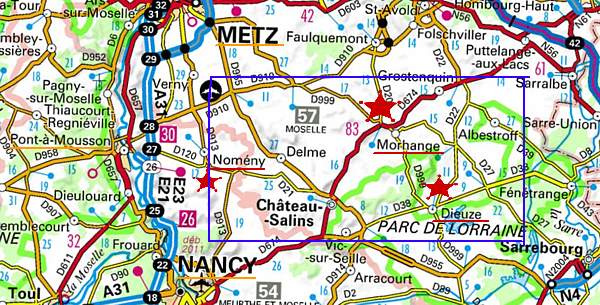
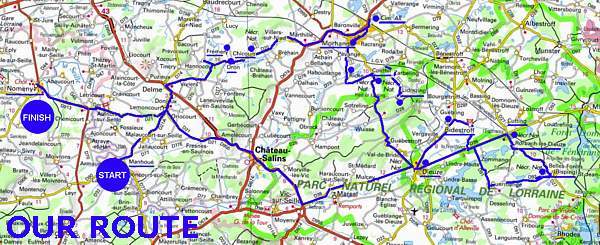
We begin our route some 500 m. north-east of the outskirts of the village of Manhoué at the junction of the D 77 and the D 21 A.
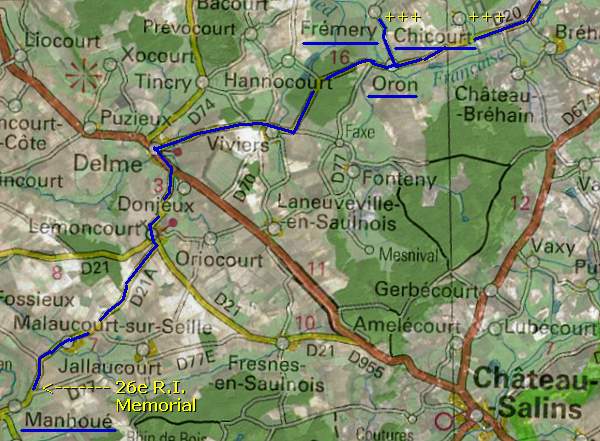
In the verge of the junction stands a memorial in a bad condition.
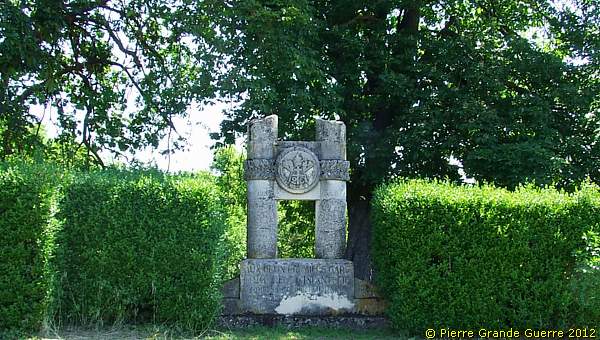
The memorial is dedicated to the 26e Régiment d'Infanterie (26e R.I.).
The inscription is barely legible:
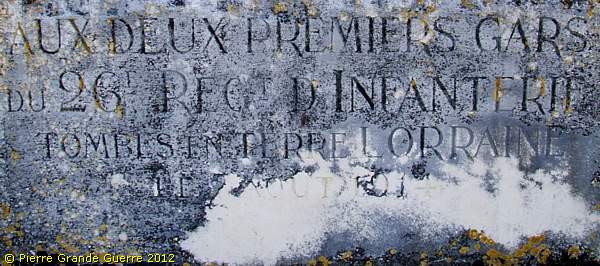
We are not far from the village, Manhoué , which was in 1914 the German border village of Manwald.
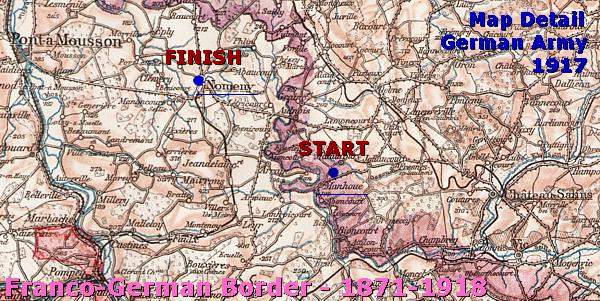
Manhoué lies along the Seille river, which formed in Lorraine a part of the Franco-German border.
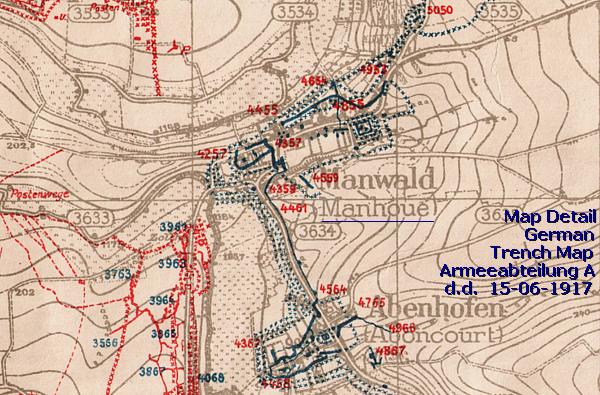
On 14 August 1914 the 26e R.I. crossed the river, captured Manwald, and lost near this spot their first soldiers, their "two boys".
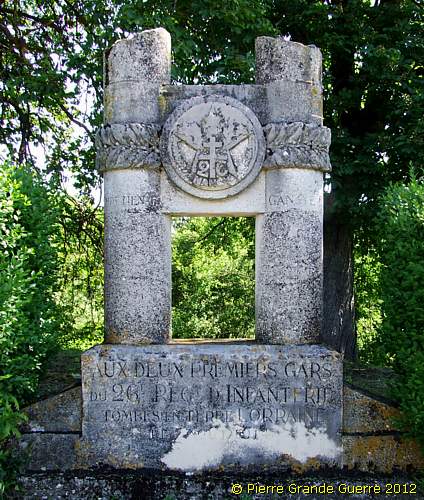
We continue north-eastward via the D 21A and the D 74, via Oron to Frémery.

A view eastward from the road from Oron to Frémery .
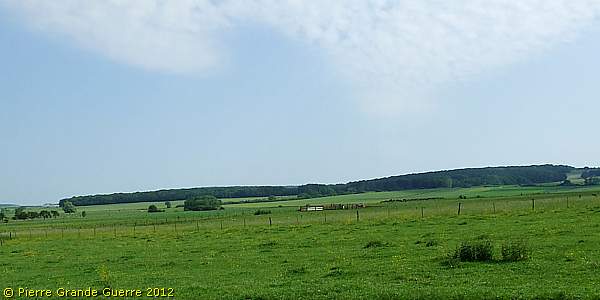
Just before the entrance of the village of Frémery we park our car at the Ossuaire Franco-Allemand de Frémery.

The Ossuaire Franco-Allemand de Frémery , the Franco-German Ossuary, contains no individual graves, but two ossuaries, one for German soldiers and the other for French soldiers.
The German mass grave contains the human remains of 13 unknown soldiers.
The French mass grave contains the human remains of 176 French officers and soldiers of the 146e Régiment d'Infanterie. All these men, buried here, were killed nearby on 20 August 1914.
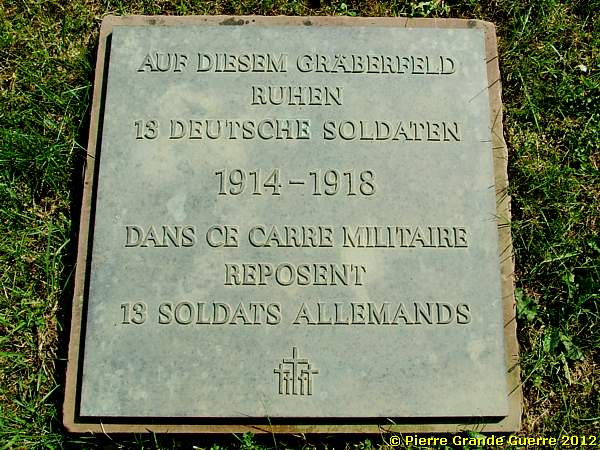
Left, under the yellow flowers, lies the German mass grave, right the French ossuary.

In the centre stands a "Monument Aux Morts", mentioning the names of the victims of the 146e R.I..
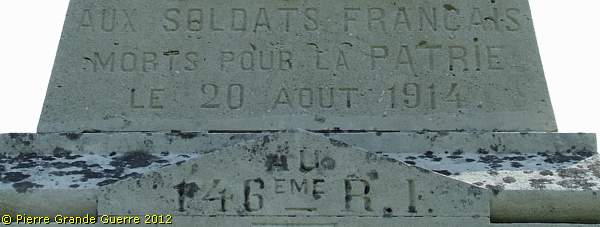
As we shall discover, the 146e R.I. counted on 20 August 1914 many losses on the battlefield of Frémery, Oron and Chicourt.
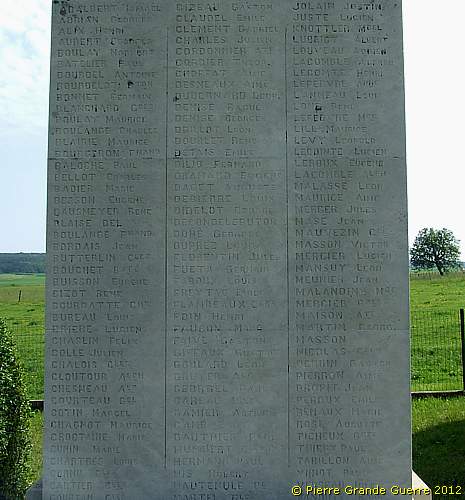
From the entrance of the Ossuaire Franco-Allemand de Frémery a view westward over the Lorraine landscape. Right: the Haut du Mont (378 m.) - (Not to be confused with the height with the same name near Charmes-Lorraine.)
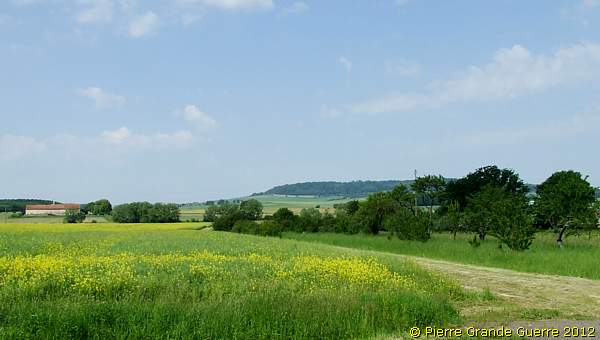
Before we continue our route, I invite you to read the first illustrated frame with concise historical background information about the Battle of Morhange .
The Battles of the Frontiers - The Battle of Lorraine - 14 August - 13 September 1914
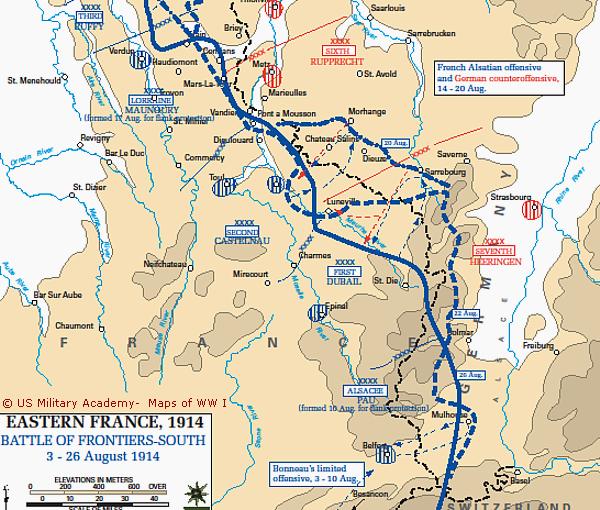
The
Battle
of Morhange
was only
one
of the several battles
fought during the period of 14 August until 23 September in Alsace and
Lorraine.
During the period of mobile warfare of the Battles of the Frontiers, the
German Armies advanced in Belgium according to the Schlieffen Plan to
Brussels, Namur and Mons.
In Alsace-Lorraine Joffre deployed three Armies to execute his Plan XVII, or Plan 17, to win back the territories France had lost to Germany in the Franco-Prussian War of 1870-1871.
Although the Alsace Army was at first rather successful in the Alsace Sundgau, the fighting in Alsace Lorraine and the Northern Vosges did not develop at all according to the French plans for the 1st Army and 2nd Army.
The Battle of Lorraine - 14 August – 13 September 1914
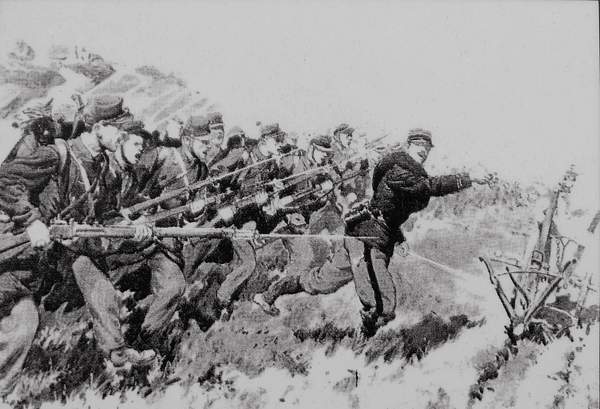
The French historians call this period of 14 August – 13 September 1914 in Lorraine the Battle of Lorraine. It was in fact a sequence of several battles in almost the same area during 4 weeks; the Battle of Morhange , the Battle of the Trouée de Charmes , including the Battle of Rozelieures , the Battle of the Mortagne , and the Battle of the Grand Couronnée , east of Nancy. The Battle of Rozelieures resulted also in the fi rst French victory of the Great War.
South-east of Nancy the French 1e Armée of Général Dubail fought during these battles in the Alsace Vosges and Général Bonneau’s Army of Alsace in the Alsace Sundgau (later Général Pau) against the 7. Armee of General von Heeringen. In the Vosges the 1e Armée would fight another battle, the Battle of the Haute-Meurthe , which lasted from 24 August until 11 September.
The Opponents in Lorraine
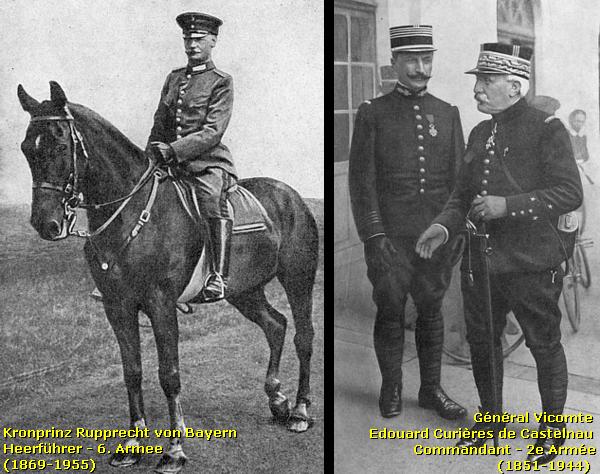
In Lorraine the units of Général de Castelnau’s 2e Armée ...

... fought against the units of the Bavarian 6. Armee, commanded by Kronprinz Rupprecht von Bayern, Crown Prince Rupert of Bavaria.

The Bavarian opponents were less colourfully dressed than their French enemies, and used a more natural colour.

With another view eastward we return from Frémery to the village of Oron and ...
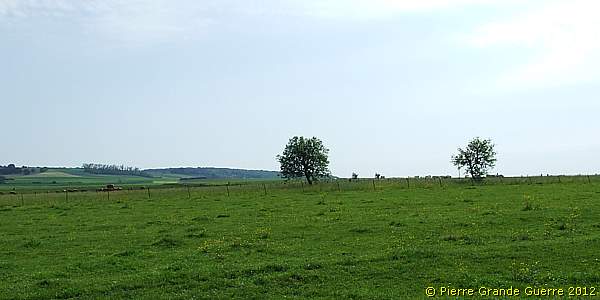
... just when we have passed the village we detect at the northern verge of the D 20 ...
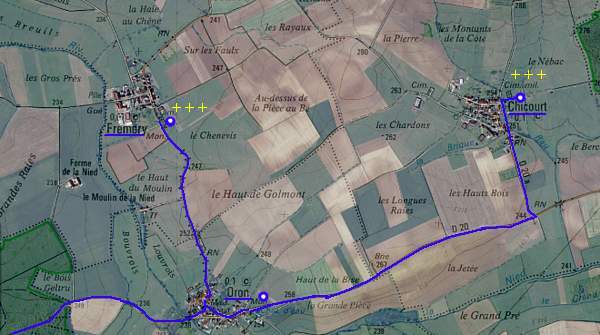
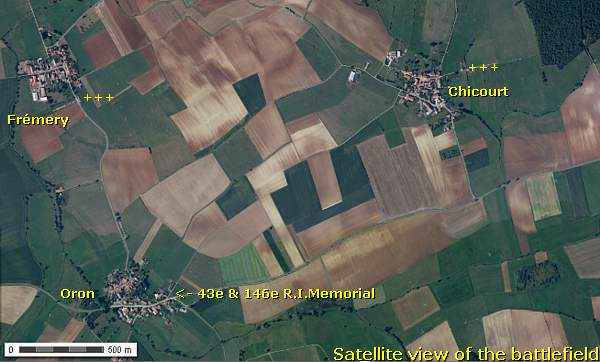
... the Oron Memorial dedicated to the 146e R.I. and the 43e R.I. Coloniale.
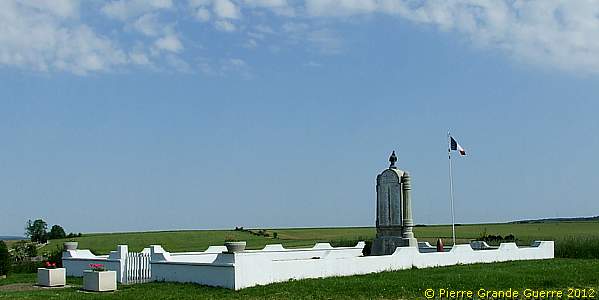

All men, mentioned on this memorial, ...
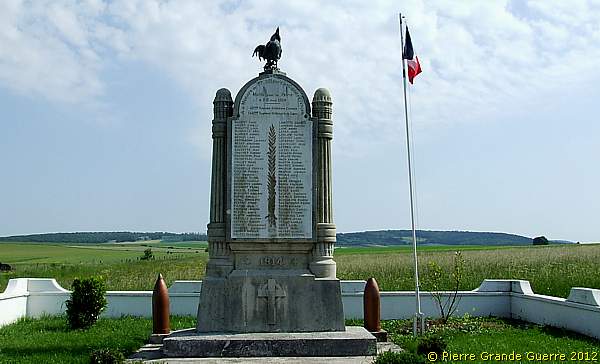
... are buried in a later period in a mass grave at the Nécropole Nationale de Riche. Four men are unknown.
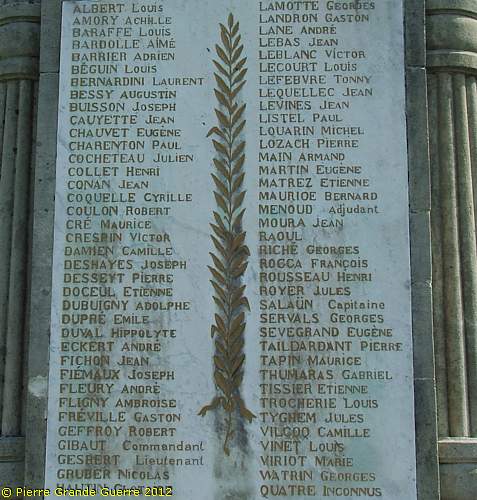
At the rear the memorial offers this panorama north-westward over the battlefield. At dawn of 20 August 1914 units of 5th Bavarian Infantry Division attacked from these hills on the horizon. After only three hours these units captured the villages of Frémery, Oron and Chicourt.
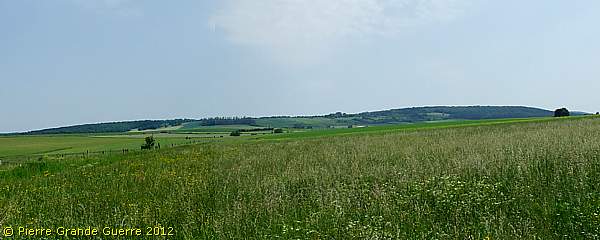
In the next frame I focus on the backgrounds of the Battle of Morhange and the subsequent " Schlacht in Lothringen ".
14–20 August 1914 - The Battle of Morhange
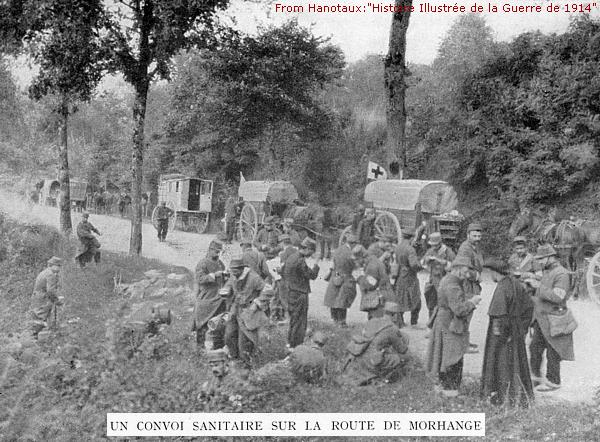
The troubles in the region around Morhange started on 14 August 1914 with the French attacks on German territory, annexed from France in 1871.
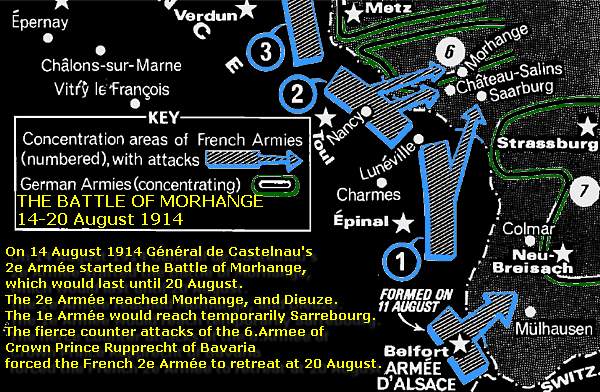
From the south the 1st Army attacked Saarburg. From Toul and Nancy Général de Castelnau’s 2nd Army attacked and reached Château-Salins, Morhange, and Dieuze.
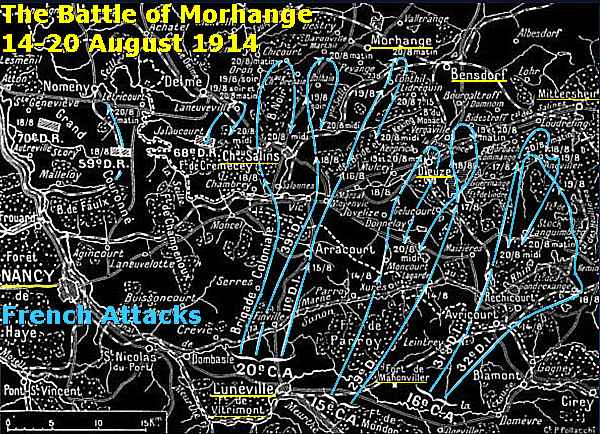
Crown Prince Rupert's mission was to engage the French forces and to keep these fixed in the centre, giving room to the advance of the right wing of the German Army, which as part of the Schlieffen Plan, encircled his opponents in the north-west.
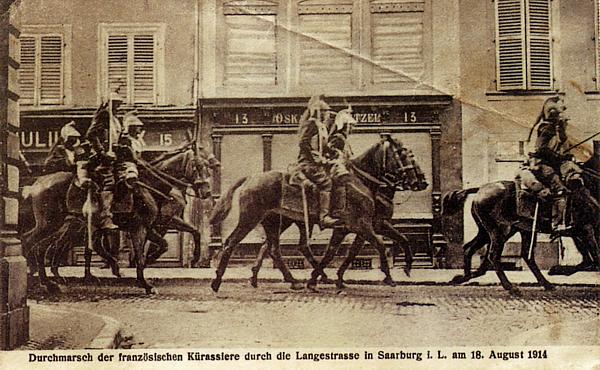
During these days the French and Germans deployed each some 150,000 men on the Lorraine battlefields.
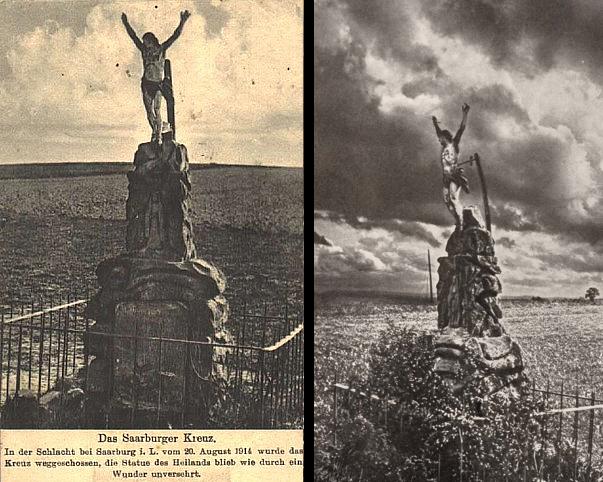
The Bavarian troops proved to be better marksmen than the French, inflicting heavy casualties on the French infantry.
Fortifications of Morhange (German: Mörchingen)
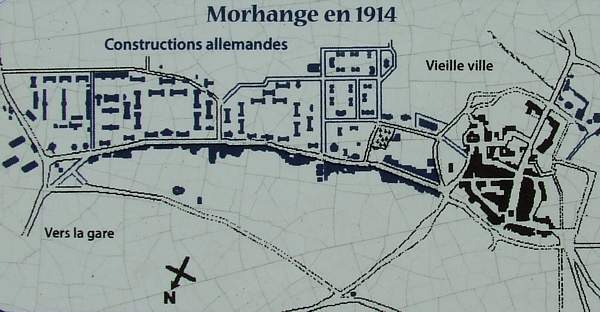
From the beginning of the war the garrison town of Morhange (258 m.) was defended by surrounding hills of about 300 m., a large natural stronghold fortified by lines of barbed wire, light military works and artillery batteries. It acquired the nickname the "Wall of Morhange." Surprised by the unexpected strength of these fortifications the French units were stopped at the foot of these hills. They could not break the German resistance and after all they were forced to retreat.

20-23 August 1914 - The French Retreat -
Die Schlacht in Lothringen
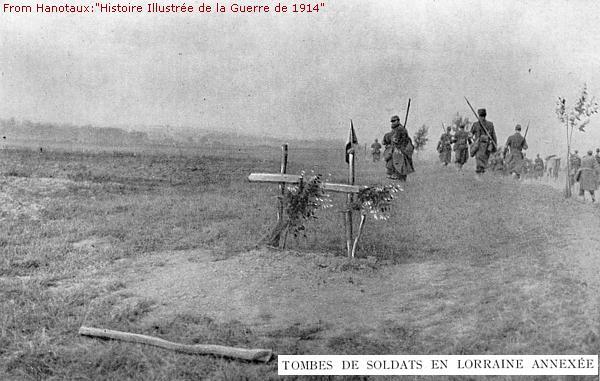
After six days, on 20 August, the fierce counter attacks of Prince Rupert’s units forced the 2nd Army to withdraw.

Three days later also Dubail’s 1st Army in the Vosges was forced to withdraw under pressure from von Heeringen’s 7th Army.
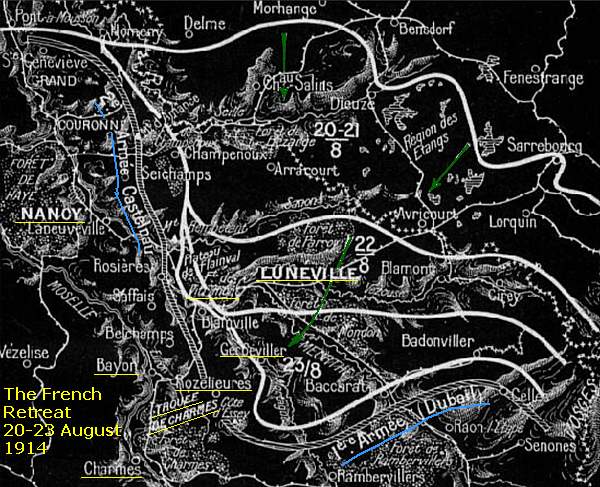
The Bavarians counterattacked and recaptured Château-Salins, Morhange and Dieuze.
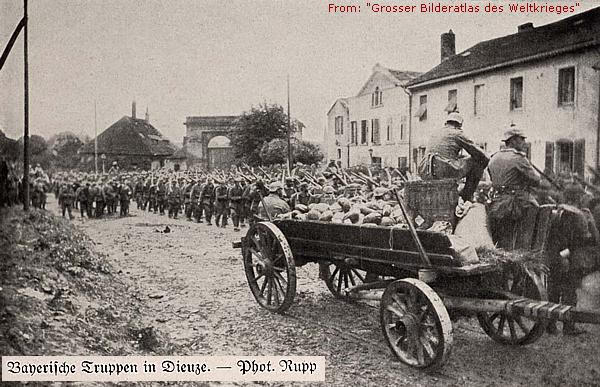
The Bavarians chased the French down until Nomeny on the French side of the border. On 22 August the Bavarians captured Lunéville.
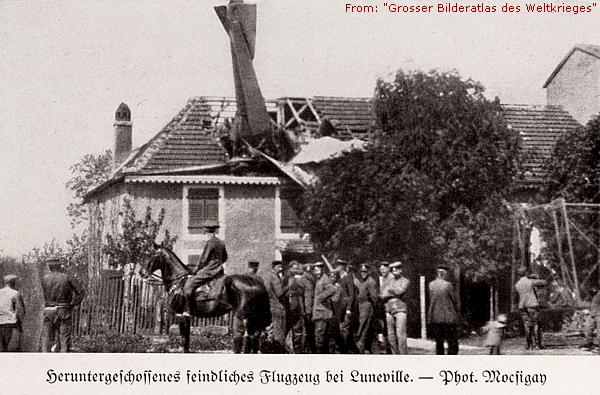
The Battle of Morhange ended with a successful German victory. According to the estimations of French historians the French Army counted at least 5,000 fallen soldiers and thousands of men wounded, the Bavarian Army counted 2,500 dead and thousands of men wounded.
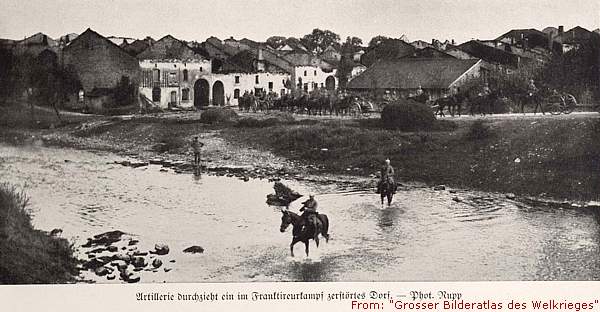
After this intermezzo we continue our route to Chicourt .

A view at Chicourt Wood left, where on 19 August 1914 the units of the French 39e D.I. had positioned themselves.
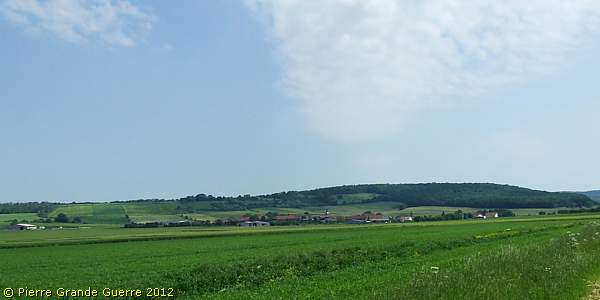
The next morning two battalions of the 21st Bavarian Infantry Regiment (B.I.R. 27), supported by artillery, attacked from the height at the right, the Bois de Neufchère, and chased the French from Chicourt Wood down over these fields. View at the height of Neufchère Wood (approx. 305 m.)
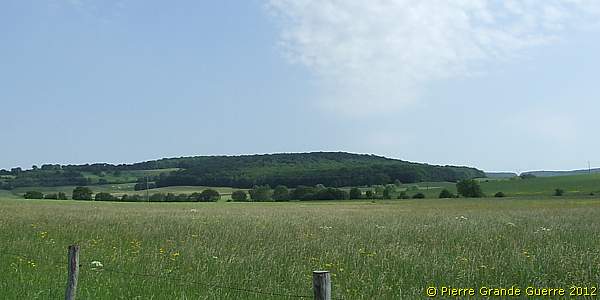
We visit east of the village of Chicourt the Franco-German Nécropole Nationale of Chicourt.
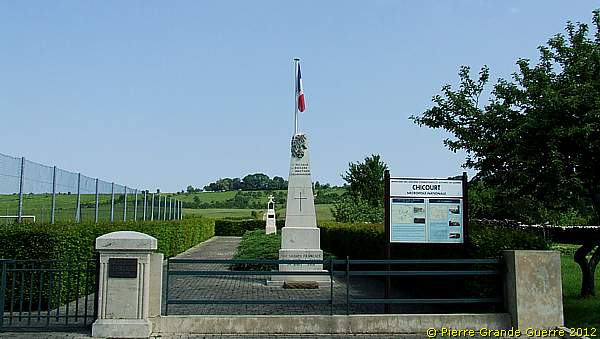
| The Franco-German
Nécropole Nationale de Chicourt
contains
the human remains of 197 French soldiers.
There is a difference between the numbers mentioned in the cemetery records and the numbers mentioned on the inscriptions. It is possible that these soldiers were buried at a much later time than 20 August 1914. The German plot possesses a memorial and one mass grave, containing the human remains of 50 officers and soldiers of the 21. Bayerische Infanterie Regiment (B.I.R. 27). All men, buried here, were killed nearby this location on 20 August 1914. German troops created this cemetery soon after 20 August 1914. |
In front lies the French plot, in the rear the German plot.
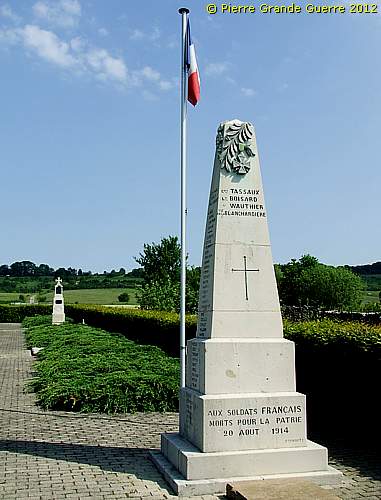
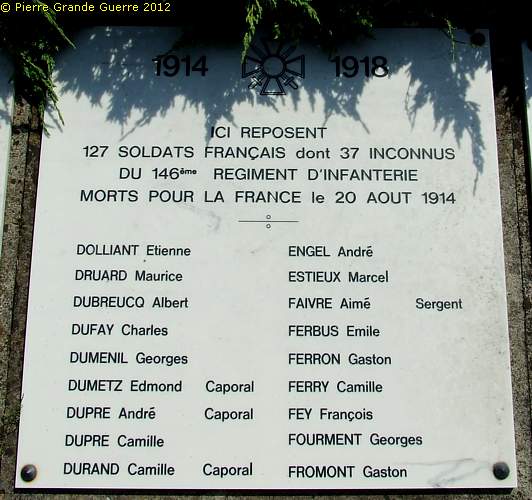
The only individual grave of a Second Lieutenant of the 146e R.I.
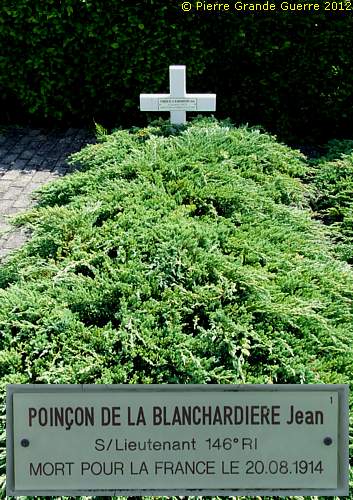
The B.I.R. 21 Memorial guards the Bavarian mass grave.
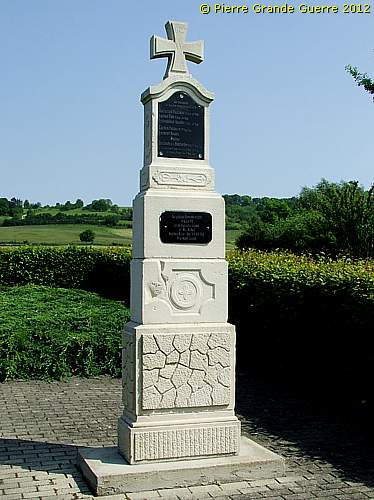
This Bavarian memorial also mentions some French officers and 128 French soldiers.
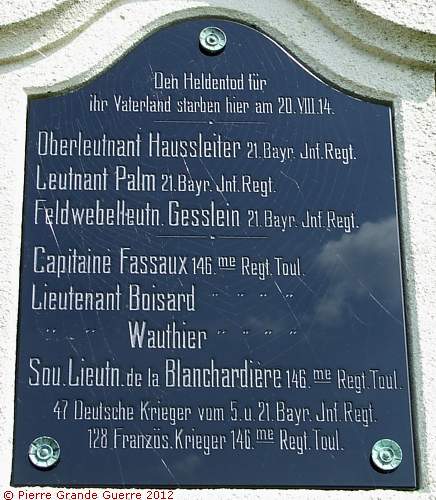
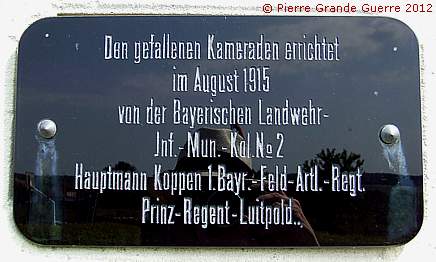
The German communal grave.

View from the cemetery north-westward.
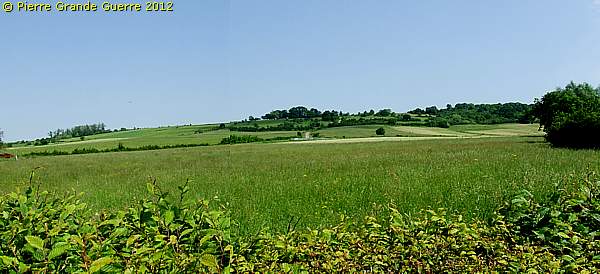
View from the cemetery eastward at the Bois de Neufchère.
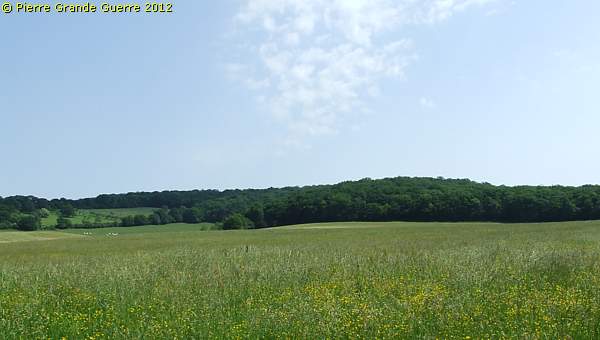
From Chicourt we continue our route to Morhange .
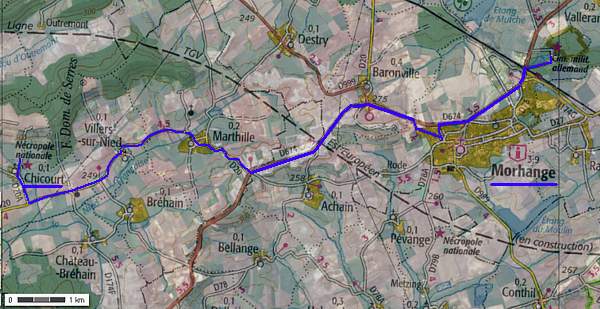

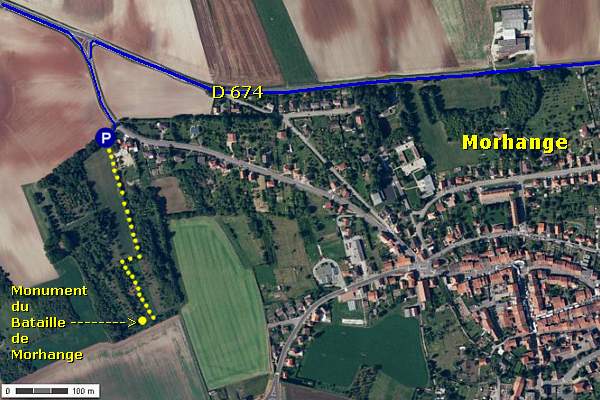
Just before we enter the town, we park our car at this sign.
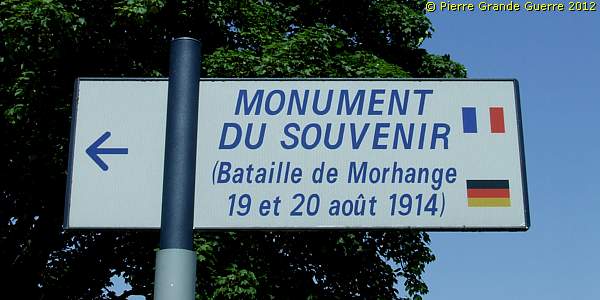
We walk some 300 m. southward to ...
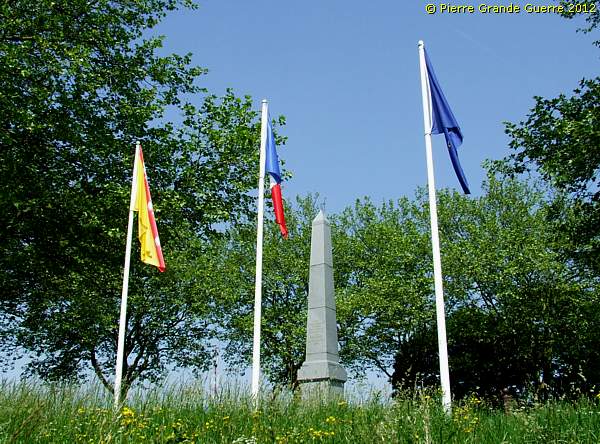
... the Memorial of the Battle of Morhange .
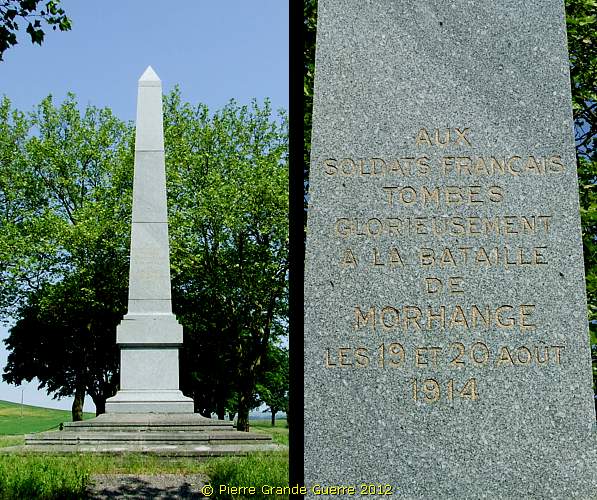
This height of 302 m., where this memorial stands, offers a wide panorama over the Morhange battlefield and over the sites, which we will visit later on our route.

Rather extra-ordinarily, this interesting information panel offers background information and it also mentions some locations of combats and the involved units!

From the Monument du Bataille de Morhange I present to you this panorama in four overlapping steps, going clockwise from south-east to south-west.
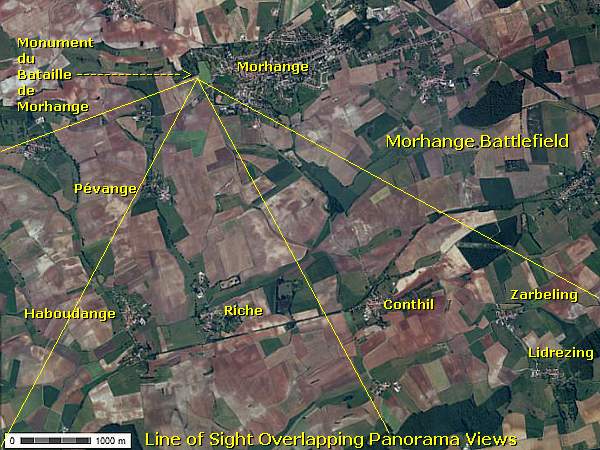
In August 1914 the 2nd Bavarian Army Corps of General von Gersattel guarded the Morhange region. View in the direction of Morhange.
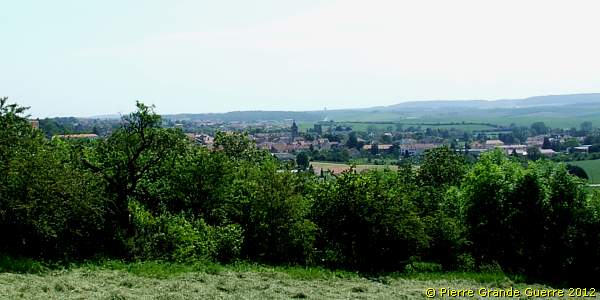
Units of the French 11e Division d'Infanterie under General Balfourier formed the opponents of the Bavarians in this sector. View in the direction of Zarbeling and Lidrezing.

View in the direction of Conthill and Riche. On the horizon: the Haute de Koeking (330 m.)
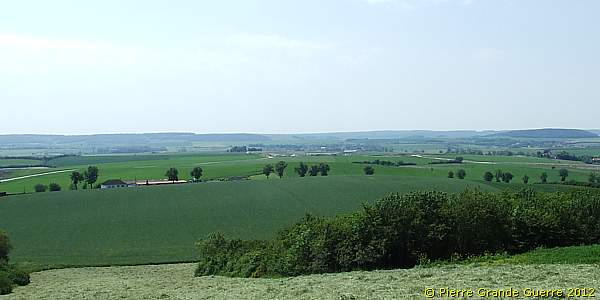
View in the direction of Pévange and Haboudange. In this western sector units of the 3rd Bavarian Army Corps under General von Martini clashed with units of the 39e D.I. of General Dantant.
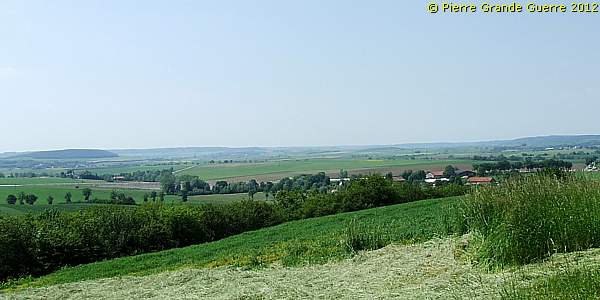
We return to our car and we continue our route along the northern outskirts of Morhange to ...

... the Deutscher Soldatenfriedhof of Morhange.
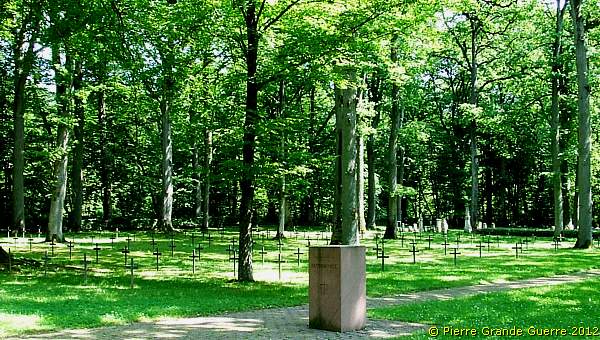

The Deutscher Soldatenfriedhof of Morhange (German: Mörchingen) contains the human remains of 4,754 German soldiers. There are 1,965 individual graves (sometimes shared by more victims) and two communal graves containing the human remains of 2,788 soldiers, of whom 72 men are unknown.
The German War Cemetery of Morhange was created by the German military administration in August 1914 during the Battle of Morhange as part of the already existing German garrison cemetery. As the war progressed, the number of dead rose to about 250. After the war, the French military authorities exhumed the French war dead and took them to their own cemetery. Subsequently, a wide-ranging collection followed of the German war dead, left in the fields of 89 municipalities. They were fighting here in the during the period of 20 - 23 August 1914 and early September. Before the collection they were often buried temporarily at the place of their death. Later were added the men fallen during the trench war battles of the years of 1915-1918 or who died of their wounds in the military hospitals.
The majority of these soldiers, buried here, belonged to military units from Bavaria.
But also members of other units are buried here; from Thuringia, Brandenburg, Alsace, Lorraine, Silesia, West Prussia, Hesse-Cassel, Mecklenburg and Schleswig-Holstein and Hanover and Brunswick.
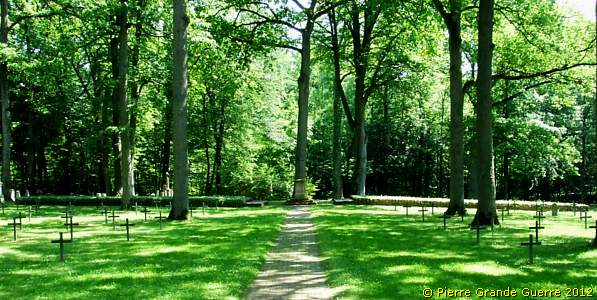
Sometimes soldiers fallen in different periods of the war share a grave. I detected also some graves of soldier musicians.
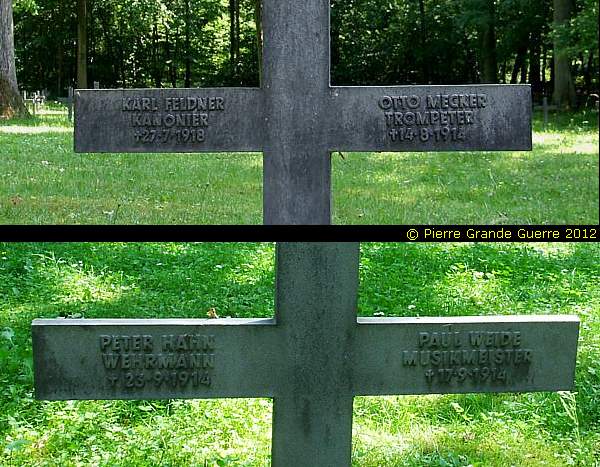
But yet you can not miss the many graves ...
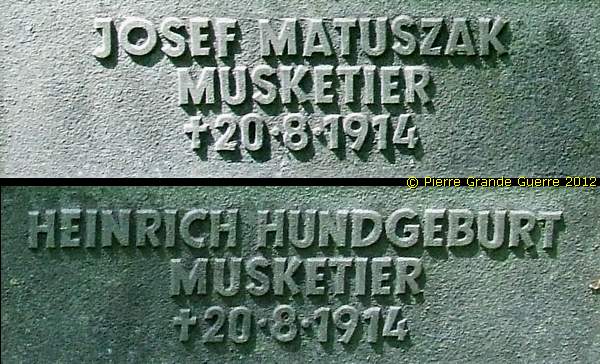
... of victims of 20 August 1914.

The two communal graves containing the human remains of 2,788 soldiers.
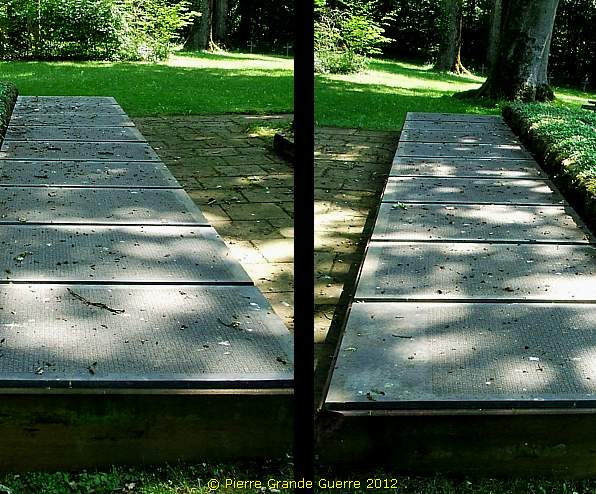
On the northern side of the cemetery is the 1871-1918 German garrison cemetery.
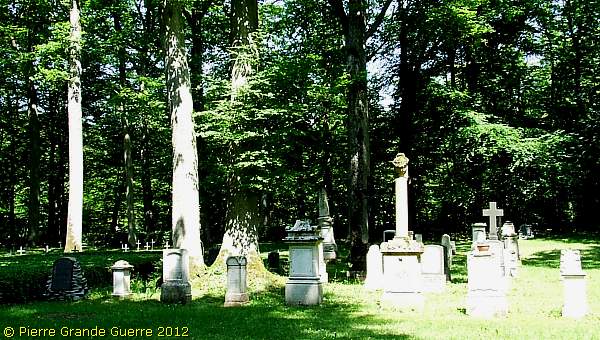
The beauty of these memorials and their inscriptions invite me to step for a short while out of the period of the summer of 1914 and to show you some samples. The grave of a rifleman, who died in 1906.
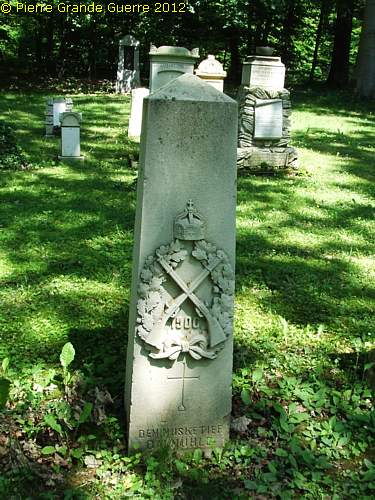
The grave of a Hannover Uhlan, a cavalryman. There used to be a plaque with more information.
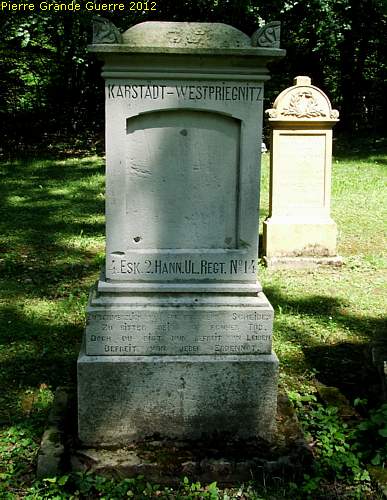
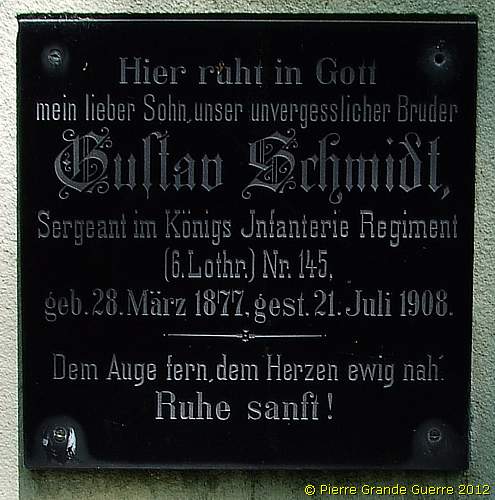
The grave of rifleman, who died in 1895, with a remarkable decoration: ...
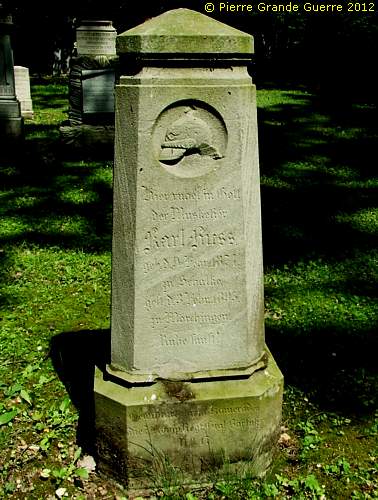
... a Pickelhaube helmet.
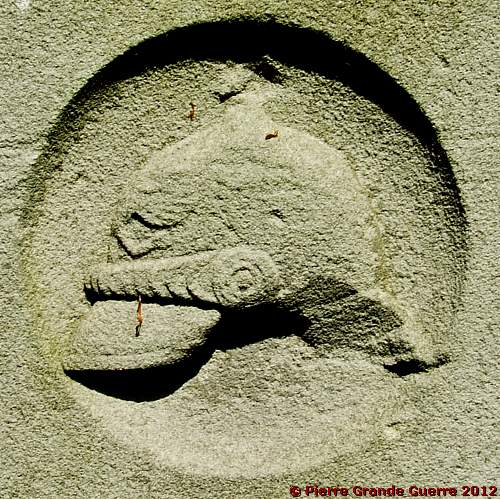
We leave the cemetery and in our minds we return to the period of August 1914.
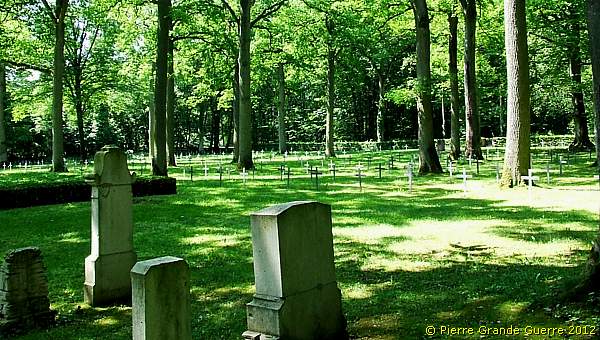
From Morhange we continue our route via the D 78A southward ...

... to a location 1 km. before the entrance of the village of Riche .
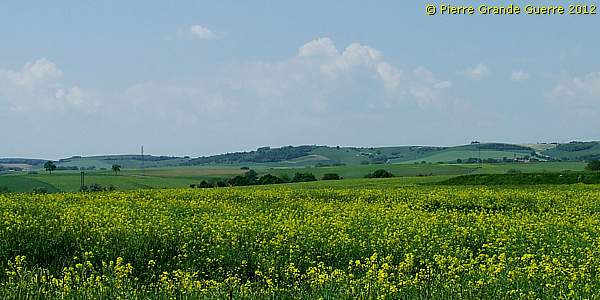
At the east side of the road we visit the Nécropole Nationale of Riche.
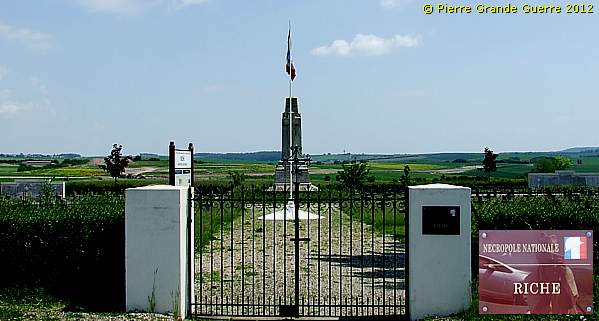
| The
Nécropole
Nationale of Riche
contains the human remains
of 2,574 French soldiers. There are 1,088 individual graves and two
communal graves, together containing the human remains of 1,486 men. 577
Men are unknown.
A remarkable feature: Allthough for lack of time we were not able to locate the grave, the cemetery contains also the grave of the son of the Général of the 2e Army, Joseph Curières de Castelnau, who was killed on 20 August 1914. Russian Plot. There are also 158 Russian graves of a later war period and a Russian mass grave with an unknown number of Russian soldiers. |
A "Monument Aux Morts" towers over the cemetery.
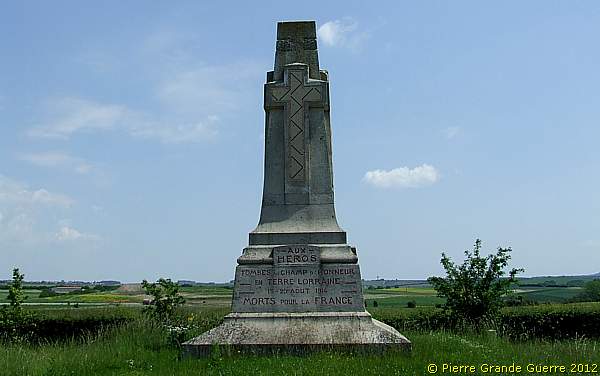

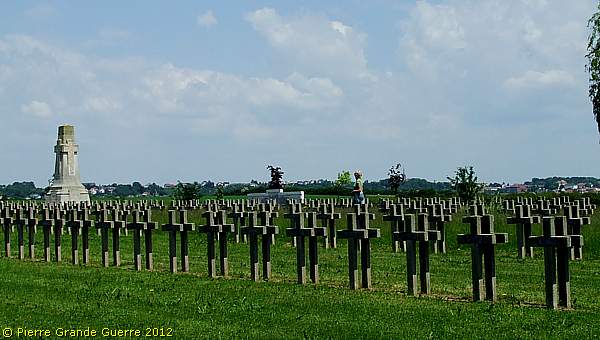
The northern ossuary possesses two panels with names and two different inscriptions. The left panel mentions the same names and soldiers, mentioned at the Oron memorial, and who fell on 20 August at Oron. The right panel mentions 1,533 names of soldiers, fallen during other periods of the war.
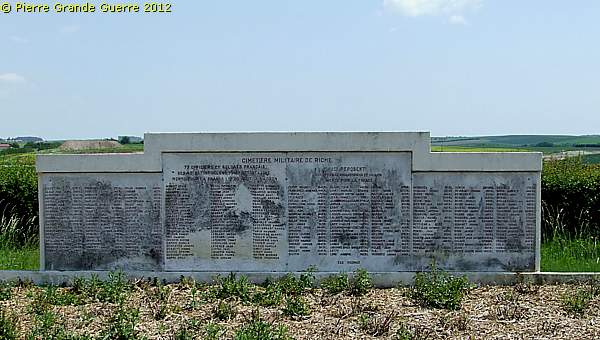
The southern ossuary contains the human remains of 186 soldiers.
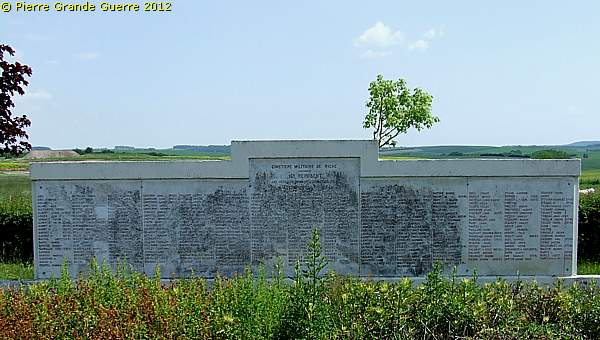
The Russian mass grave with an unknown number of Russian soldiers, most likely also with a higher number of victims than buried in the individual graves here.
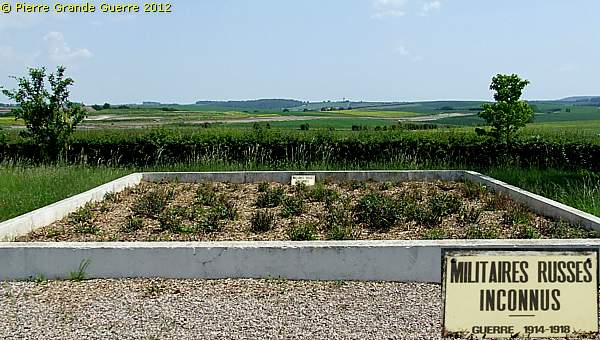
Russian Troops in France
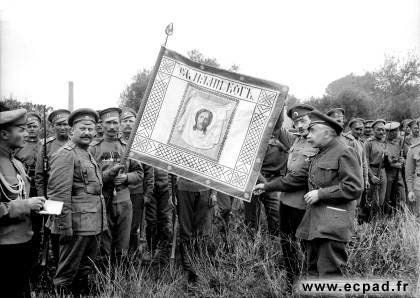
In 1916, at the request of the French government, Russia sent an expeditionary force of 44,000 men to France, in 4 brigades, 2 of these were engaged in the Champagne.
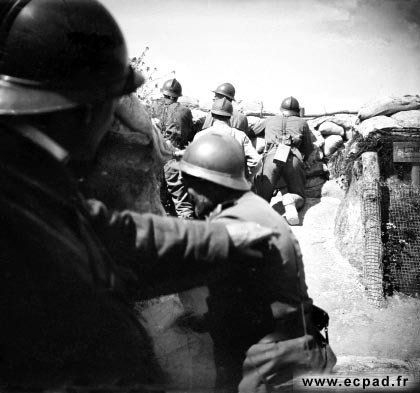
At the time of the revolution in October 1917 and after the mutinies of the Nivelles Offensive, the brigades were broken up and retired from the front.
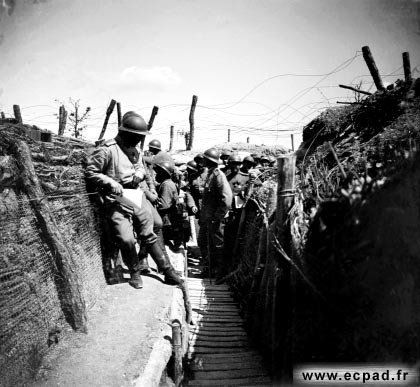
Some Russian officers, together with some volunteers, then formed a "Russian Legion for Honour", and continued fighting until the Armistice in French uniform, as part of the Moroccan Regiment.
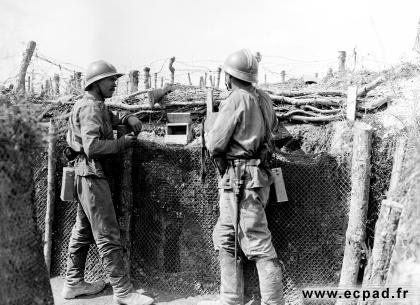
Of those 2,848 Russian volunteers 313 were killed, 89 won a military medal, 373 won the "Croix de Guerre", the War Cross. The Russian losses from 1916 to 1918 were in total 4,000 soldiers killed.
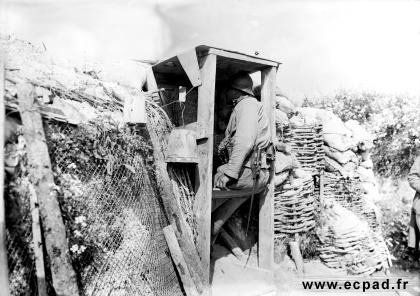
The plot of graves of the 158 Russian soldiers. The memorial chapel in the background was closed, alas.
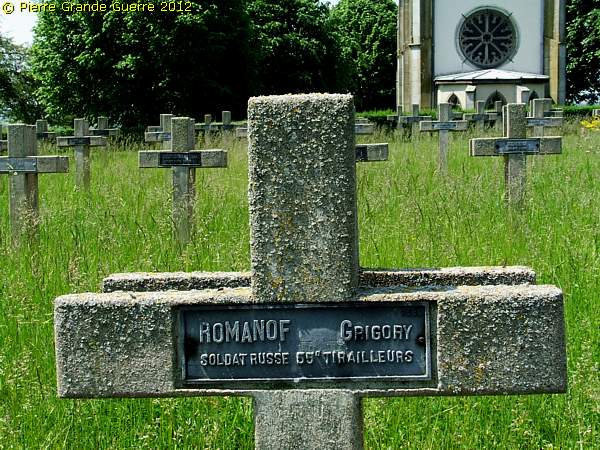
Most crosses lack a date of death.
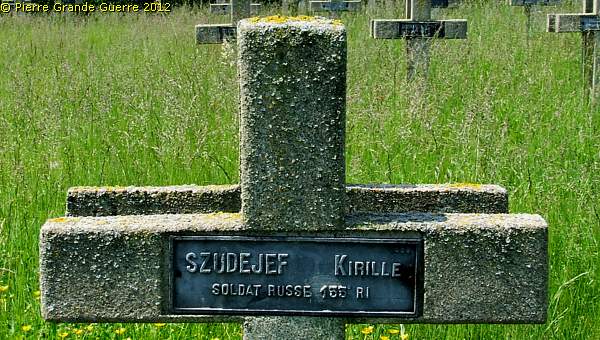
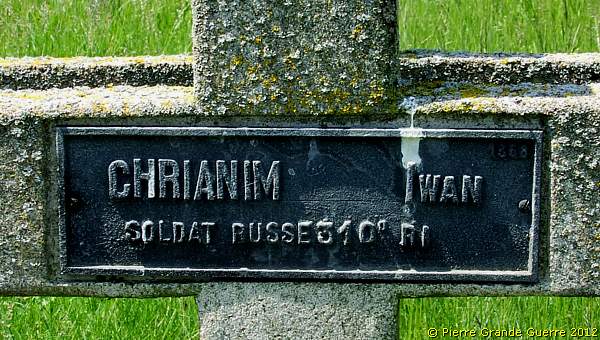
From the Russian plot we walk to the northern edge of the cemetery ( right ).
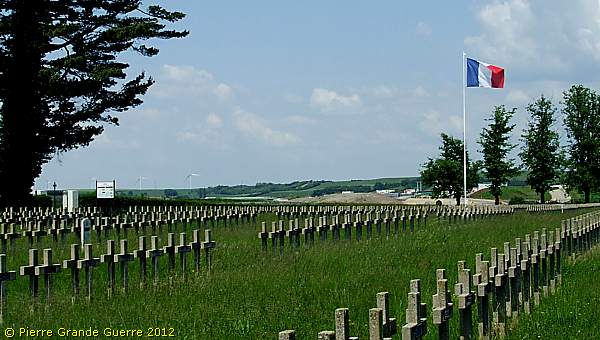
From the edge of the cemetery I made this teleview northward of the Memorial of the Battle of Morhange at Morhange, which we visited some moments ago.
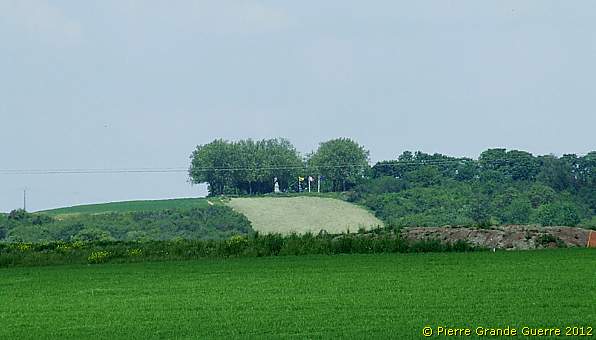
We leave the Riche cemetery. View from north to south.
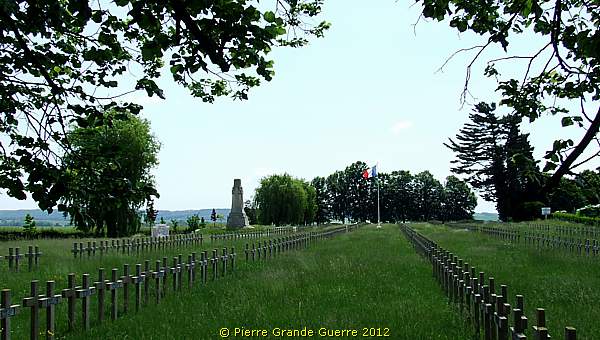
Via the D 79 we continue eastward to Conthil .
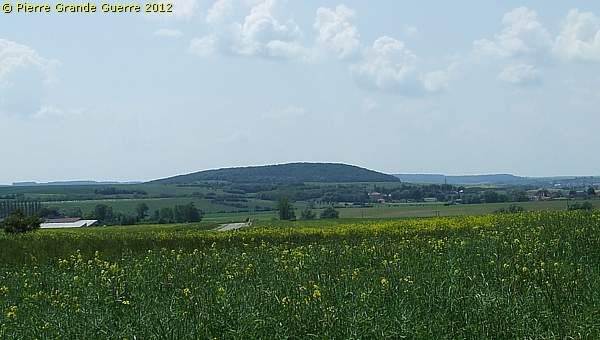
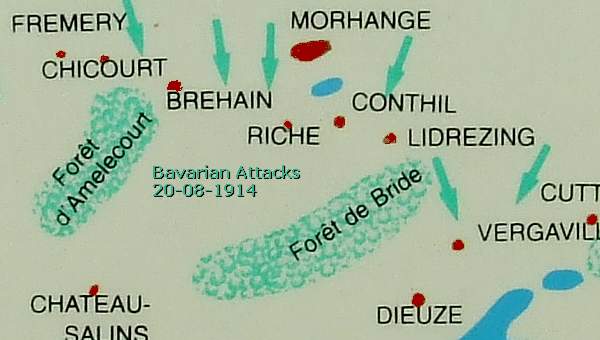
At dawn of 20 August units of the B.I.R. 23 and of the Bavarian Jägerbataillon 1 attacked from the east and north-east Conthil, then occupied by units of the 37e R.I.
Around 8 o'clock the Bavarians occupied the village definitely. French artillery fire delayed for a while the westward progress of the Bavarians.
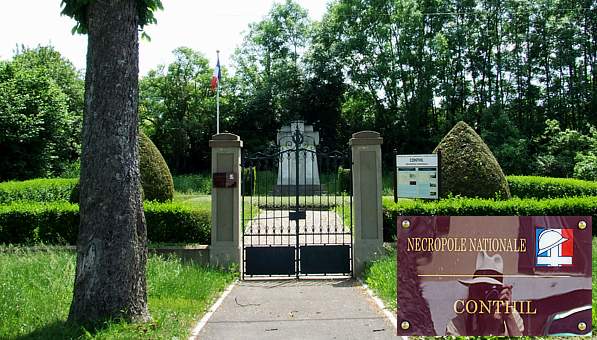
The
Nécropole Nationale of Conthil
contains the human remains of 39 French soldiers.There is one individual grave of an officer and one communal grave. All officers and soldiers, buried here, were killed near this site on 20 August 1914.
The grave of Capitaine Georges de Fabry of the 37e R.I.
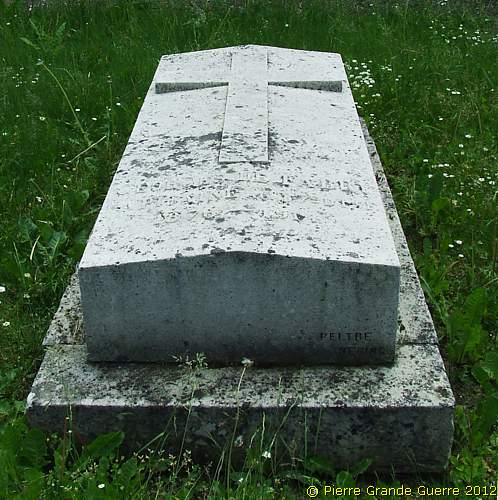
The memorial with a list of names of the victims.
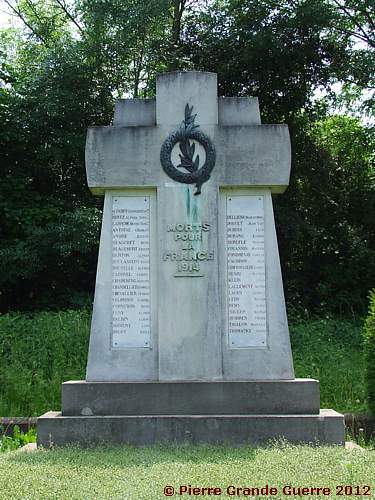
We continue south-eastward via the D 79C via the hamlet of Zarbeling to Lidrezing.

In Lidrezing , along the Rue Principale, we find the "Espace de 69e R.I." with this remarkable memorial for the dead, also commemorating eight ...
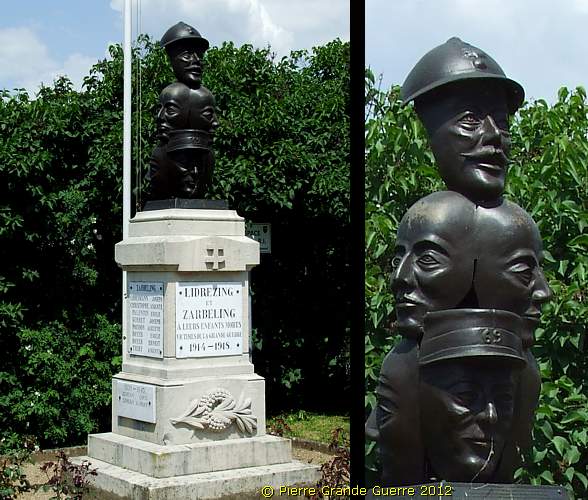
We continue to an open spot at the Haut de Koeking at 330 m. to the Nécropole Nationale of Lidrezing .
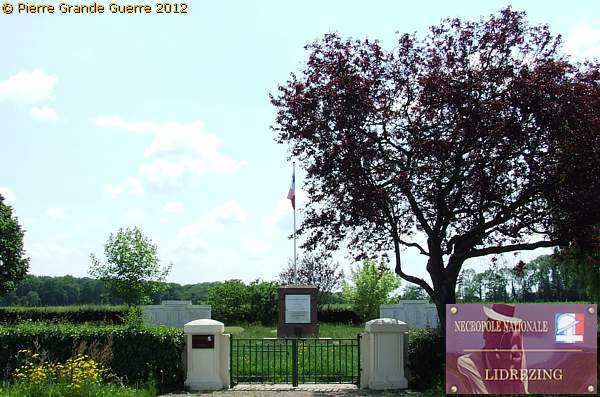
The
Nécropole
Nationale of Lidrezing
contains the human remains
of 549 French soldiers.
There are 116 individual graves and two communal graves, together
containing the human remains of 433 men.
The officers and soldiers, buried here, were all killed on 20 August
1914. Soon after the battle German troops created this cemetery.
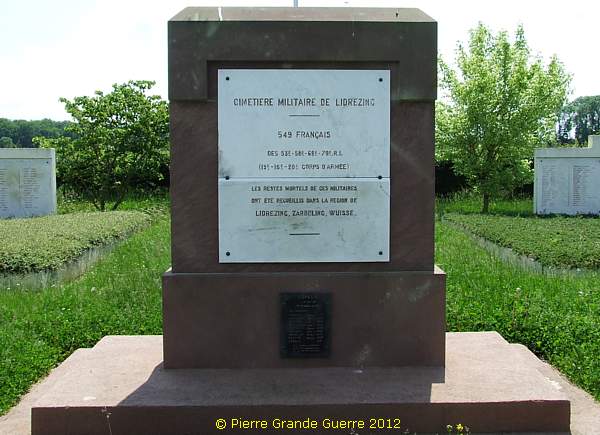
Lidrezing - 19-20 August 1914
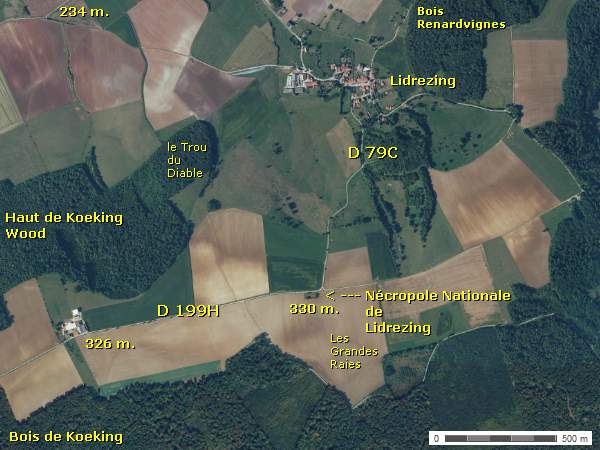
On 18 August 1914 there was a gap in the German frontline north of Lidrezing. The Germans expected already a French attack on this front sector. Generalmajor Mark's orders were to fill the gap and to defend a line around Lidrezing.
On its own initiative Generalmajor Mark ordered his 5th Bavarian Infantry Brigade to occupy "Height 330" and to set up defensive lines on the height and around Lidrezing.
On 20 August 1914, around 14.30 hrs., units of the French 21e and 22e Brigades d'Infanterie opened fire and they succeeded to infiltrate the area around this cemetery, les Grandes Raies, and the surrounding woods of the Haut de Koeking.
During the evening a pincer movement counterattack of battalions of the B.R.I.R. 5 caused the surviving French to withdraw.
A closer view at the texts of the memorial.
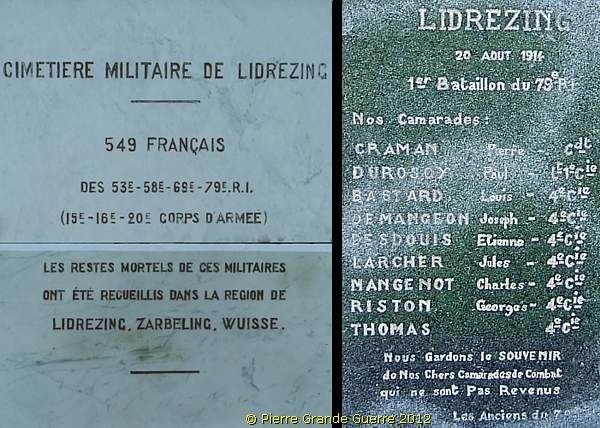
Left:
"MILITARY CEMETERY OF LIDREZING - 549 FRENCH MEN OF THE 53E - 58E - 69E - 79E R.I. (15E - 16E - 20E ARMY CORPS) - THE MORTAL REMAINS OF THESE SOLDIERS HAVE BEEN COLLECTED IN THE REGION OF LIDREZING, ZARBELING, WUISSE"
Right:
"LIDREZING 20 AUGUST 1914 - 1st Battalion of the 79e R.I. - Our Comrades: (.......) - We keep the MEMORY of our dear comrades in arms, who have not returned - The Veterans of the 79e"
In the left ossuary rest 206 men of whom 101 are unknown.
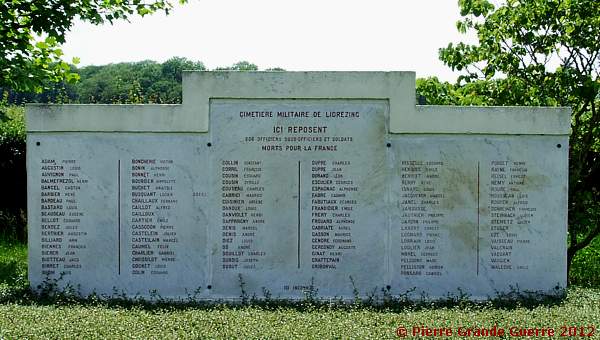
In the right ossuary rest 228 men of whom 102 are unknown.
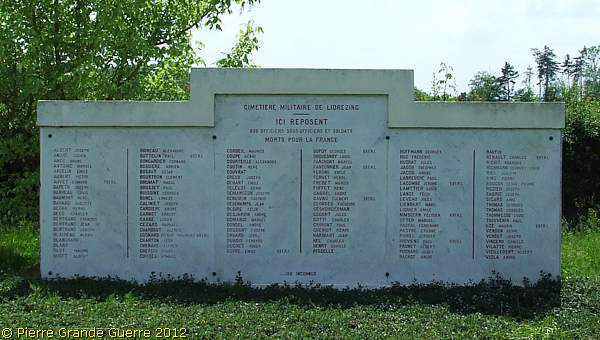
The entrance of the Lidrezing cemetery offers an impressive panorama north-eastward over the battlefield.

I present to you this panorama in three overlapping steps, going clockwise from north-west to north-east.
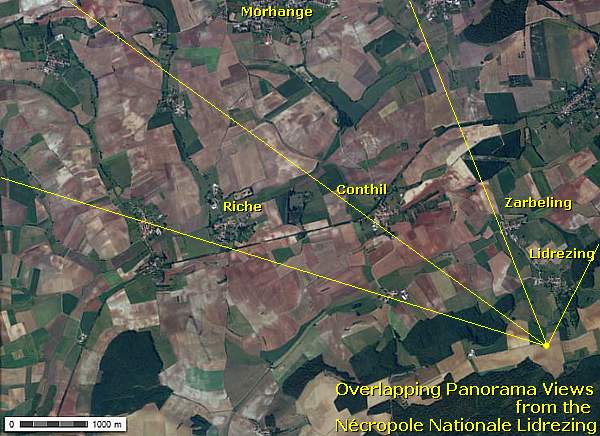
Left a part of the wood of the "Trou du Diable", the "Devil's hole", and right Riche.
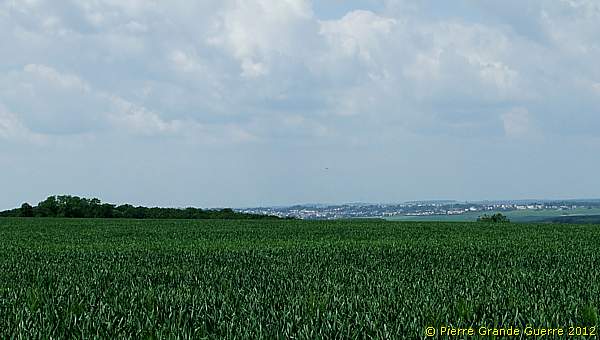
View in the direction of Conthil (right).
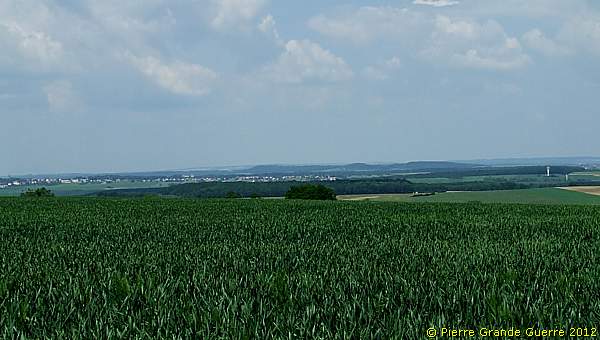
View in the direction of Conthil (left), Zarbeling and to the church tower of Lidrezing (centre), and Rodalbe (right).
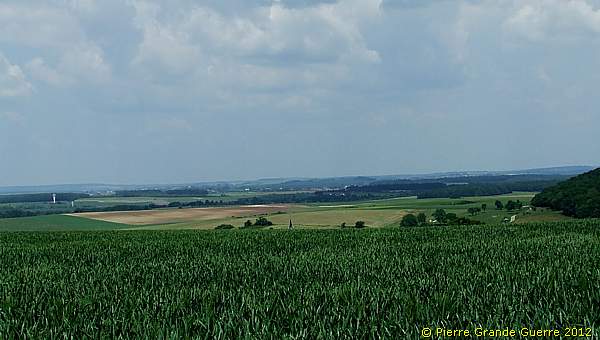
From the Haut de Koeking we continue southward via the D 999 to Dieuze.
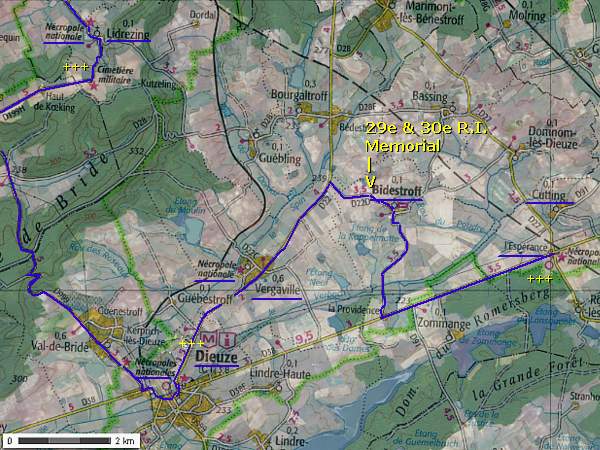
In Dieuze we visit at its north-eastern outskirts the large Dieuze Military Plot of the civilian cemetery.
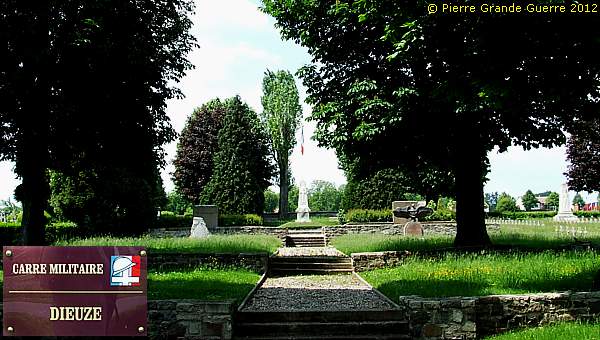
Besides a large plot of Polish war graves of the Second World War the Carré Militaire of Dieuze also contains the human remains of 1,357 men of four different nationalities, who died during the Great War. 122 Germans, 263 French men, and 7 Russians are buried here. 947 Romanians are buried in a separate plot.
The German army created in 1914 the German cemetery of Dieuze for their own dead and for the dead of the French forces during the period of 17 - 23 August 1914.
During the fighting at Dieuze about 300 soldiers from both sides fell or died of their wounds in the hospitals. This number increased to 1918 to over 500. After the war, the French military authorities transferred the German victims resting in individual graves to the cemetery in Morhange. The French victims were transferred to the cemetery near Cutting.
A rather extra-ordinary feature, there are two communal graves, together containing the human remains of both French and German soldiers, buried together in these mass graves. Generally you will find on the Franco-German war cemeteries two separate mass graves, each made for one nationality.
Before we go up the stone stairs we notice this rather modern memorial dedicated ...
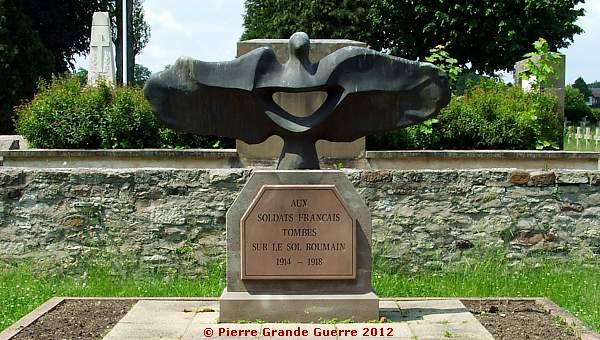

We continue to the memorial obelisk.
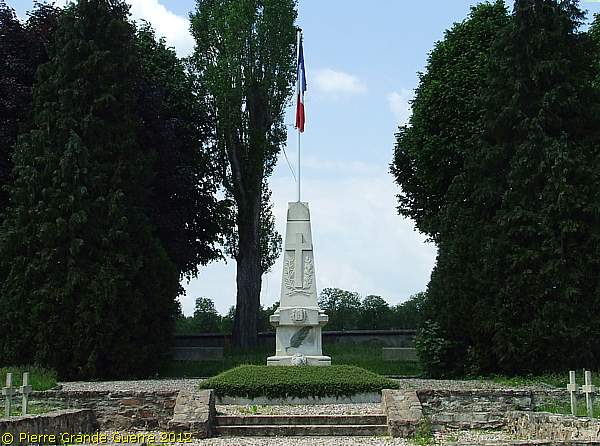
Dieuze - August 1914

French troops occupied Dieuze on 17 August 1914 having met no resistance of the then still withdrawing Germans.
The majority of the fights of 20 August 1914 happened more to the north-east of Dieuze. On that day Dieuze itself stayed out of the heat of the battle. Its French occupants were forced to withdraw or they were lost in the fights around Bidestroff.
From the end of August Dieuze would serve temporarily as the headquarters of the "Oberkommando" of the German 6th Army.

Here I turn my back to detect the two densely vegetated communal graves, marked here with small circles.
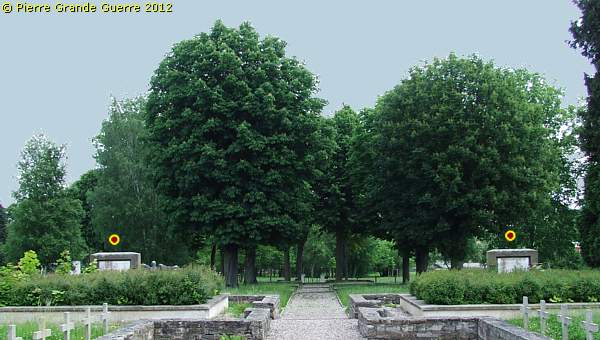
I feel rather annoyed by the height of the grass and the poor state of the unkempt plants on the graves.
The left communal grave where German and French soldiers rest together, ...
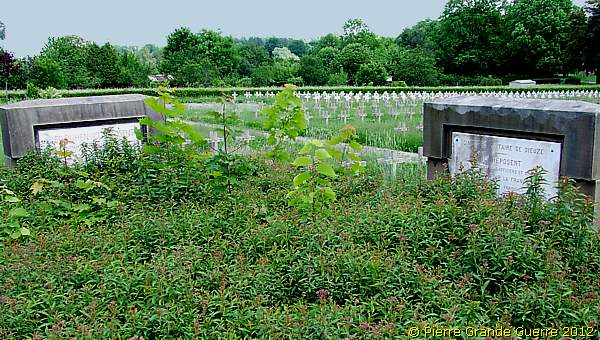
... with 105 French soldiers and ...
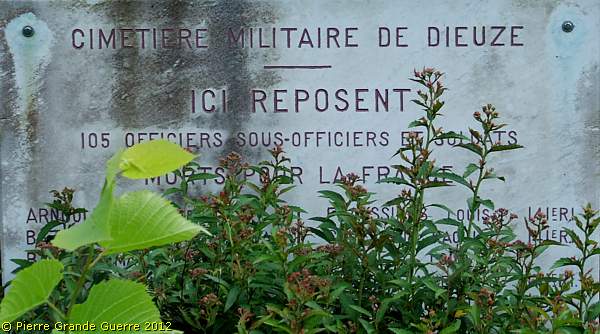
... an unknown number of German soldiers.
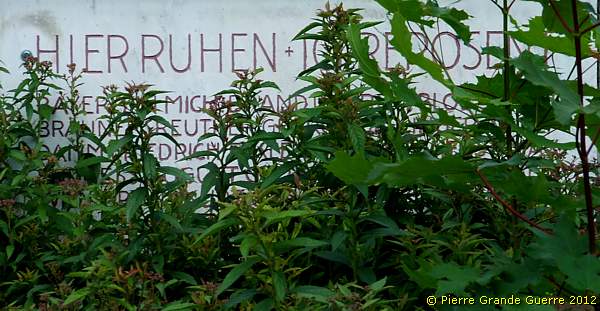
The right ossuary contains the human remains of ...
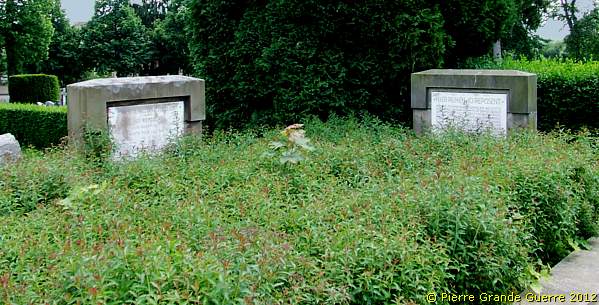
... 134 French soldiers and ...
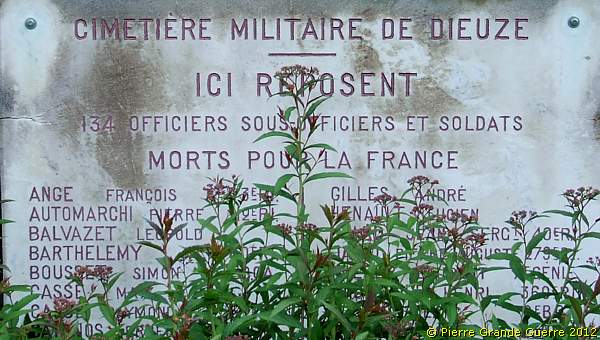
... again an unknown number of German soldiers, unknown due to the unkempt plants.
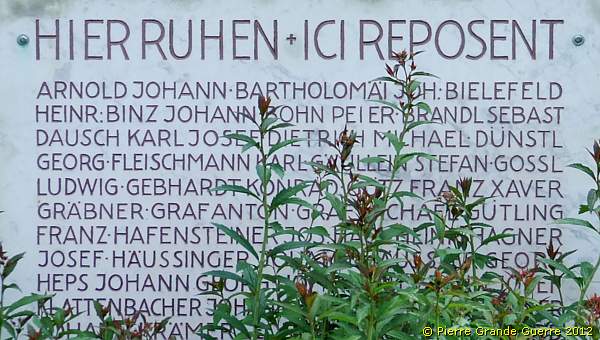
In the north-western corner of the cemetery stands a memorial, dedicated ...
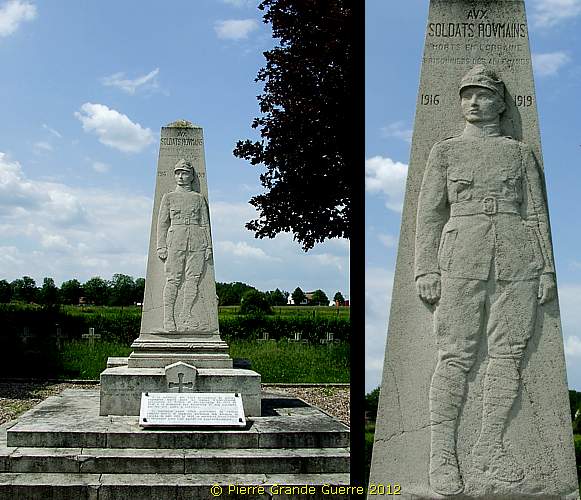
Of the more than 100,000 Romanian Prisoners of War, many Romanian soldiers were transported from Romania to P.O.W. camps in German states like Alsace and Lorraine. 2,344 of them died during their captivity in Alsace and Lorraine.
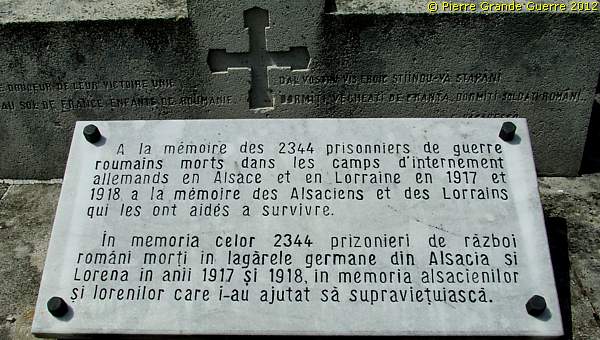
These Romanian soldiers, buried here, were made Prisoner of War during the Romanian Campaign.
The Romanian Campaign - August-December 1916
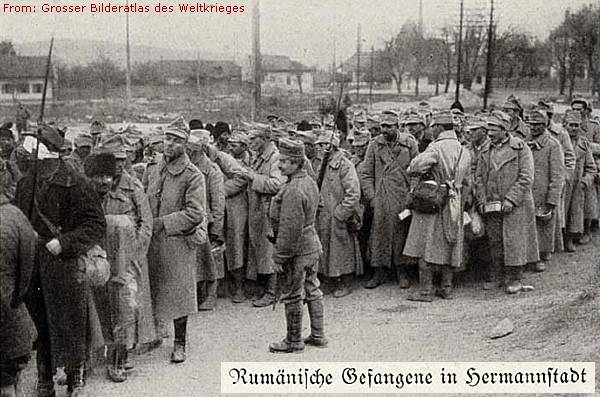
Romania attacks Transylvania and parts of Hungary
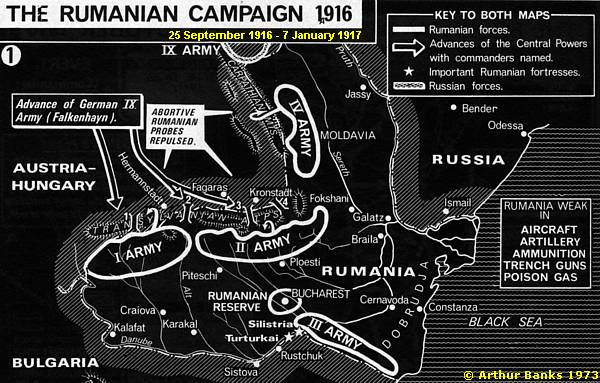
On 27 August 1916 Romania declared
war on Austria-Hungary and the other Central Powers of Germany and
Bulgaria. On the night of 27 August, three Romanian armies, the First,
Second and Northern Army, were deployed according to the Romanian Campaign
Plan (The "Z" Hypothesis). The armies launched attacks through the
Carpathians and into Transylvania. Initially the only opposing force was the
Austro-Hungarian First Army, which was steadily pushed back toward Hungary.
The rapid Romanian advance alarmed the Central Powers. Sizable German forces
began arriving at the scene. The Austro-Hungarians also sent four divisions
to reinforce their lines, and by the middle of September, the Romanian
offensive was halted. The Russians loaned them three divisions for operations
in the north of Romania, but otherwise very few supplies.
Counter Offensive of the Central
Powers; the Romanian Campaign
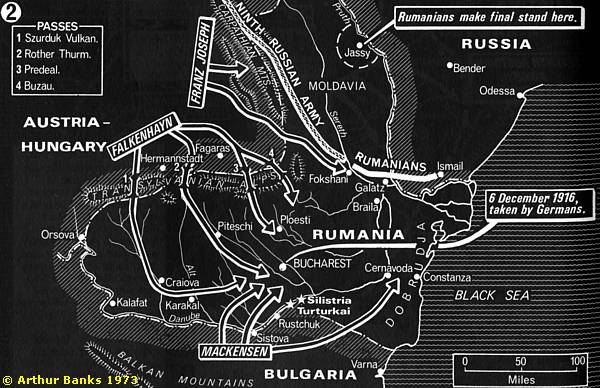
From 25 September the Central
Powers launched a successful counter offensive, the Romanian Campaign, over
the Carpathians and Transylvanian mountains. This culminated in the conquest
of Bucharest on 6 December 1916. The fighting would go on until 7 January
1917.
Romanian Casualties
The total of Romanian casualties of this campaign is estimated at 250,000 men.
According to German sources of the period the Romanians lost at least 774 Officers, 107,900 P.O.W.’s , 448 artillery guns, and 186 machine-guns. According to other sources the number of fallen Romanian soldiers is estimated on a number between 75,000 and 100,000 men.
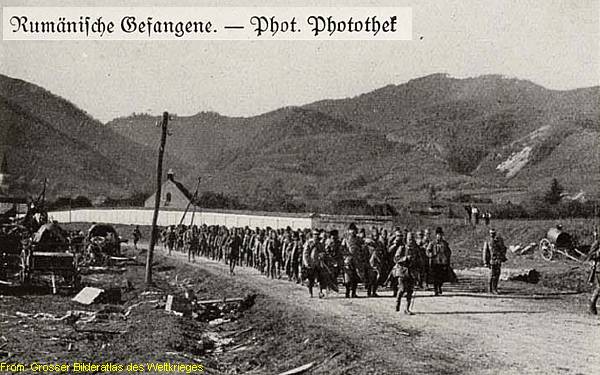
According to the inscriptions on memorials at the Romanian Military Cemetery of Soultzmatt , Vosges, ...
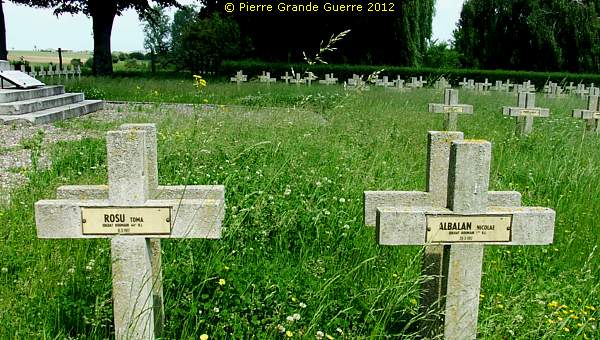
... the Germans gave the Romanian P.O.W.'s a hard time: ...
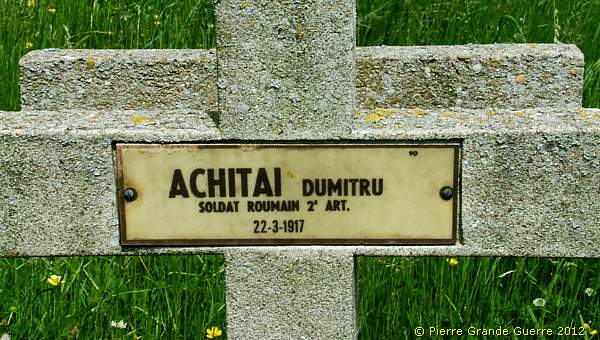
"THEY HAVE KNOWN HUNGER, HARDSHIP, AND TORTURE." And: ...
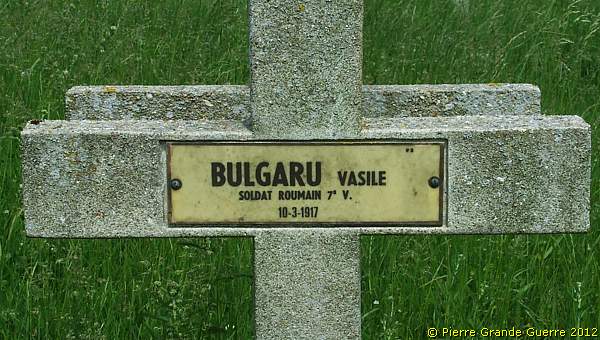
"IT HAS BEEN PROVEN THAT ALL, WHO REST HERE, HAVE DIED AFTER
UNSPEAKABLE SUFFERING."
We leave Dieuze and via the D 22, ...

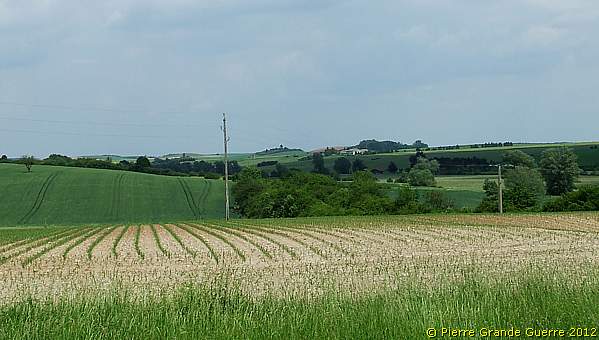
... we continue to Vergaville .
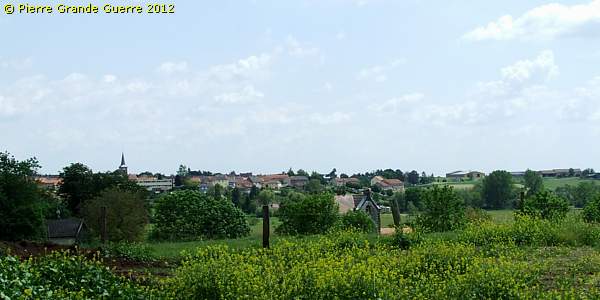
North-west of the village we visit the Nécropole Nationale of Vergaville .
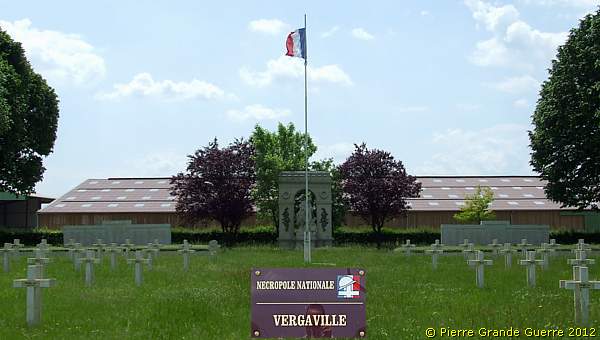
The
Nécropole
Nationale of Vergaville
contains the human
remains of 1,151 men.
There are 189 individual graves and two communal graves, together
containing the human remains of 962 men.
The officers and soldiers, buried here, fell in the area around
Bidestroff, some 2 - 3 km. to the north-east of the cemetery, during the
period of 19 - 20 August 1914.
In the left communal grave rest 474 officers and soldiers.
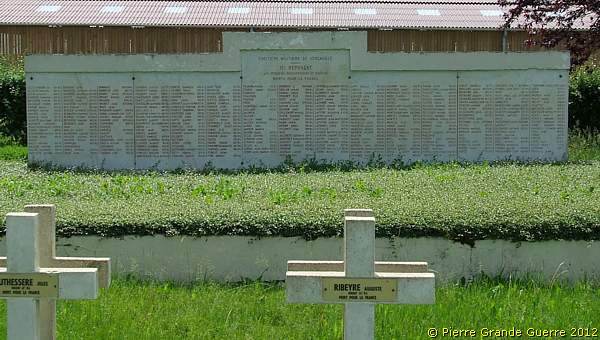
A memorial in the shape of a triumph arch is dedicated ...
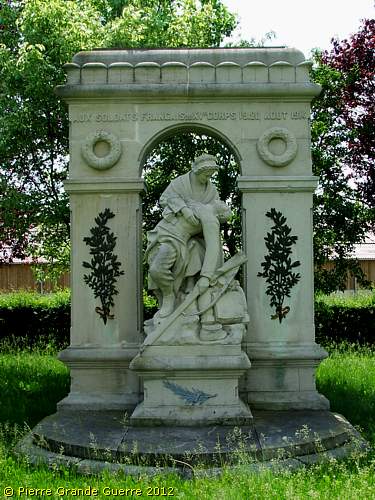
In the right ossuary rest 457 officers and soldiers.
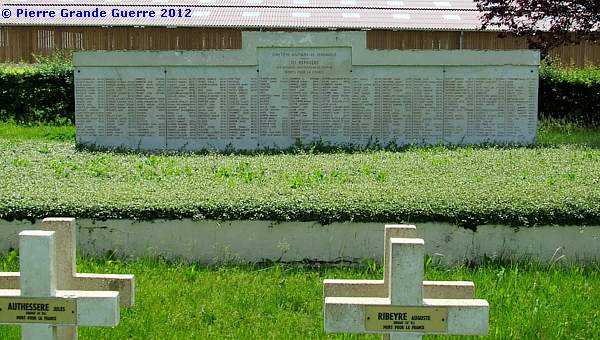
Some 3 km. from here the units of the XVe Corps d'Armée, the 112e and 141e R.I. supported by the 6e Bataillon Chasseurs Alpins (6e B.C.A.), occupied on 19 August the village of Bidestroff. These units took up position north of the village.
View from the cemetery entrance north-eastward to les Trois Monts and Bidestroff.
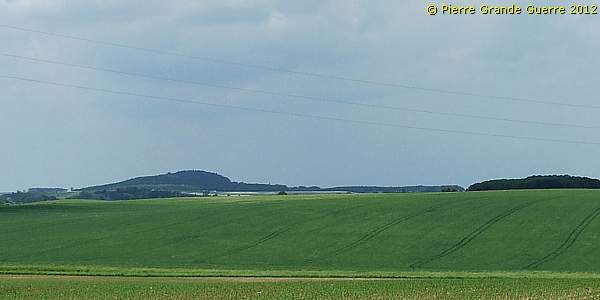
We leave Vergaville and we continue our route north-estward along the D 22 ...
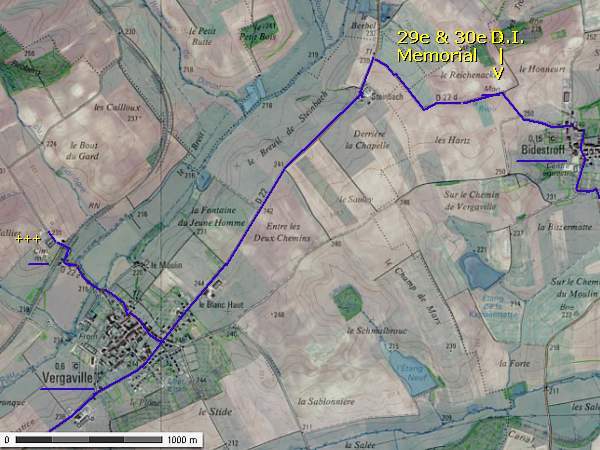
... and the D 22D to a site some 500 m. north-west of Bidestroff .
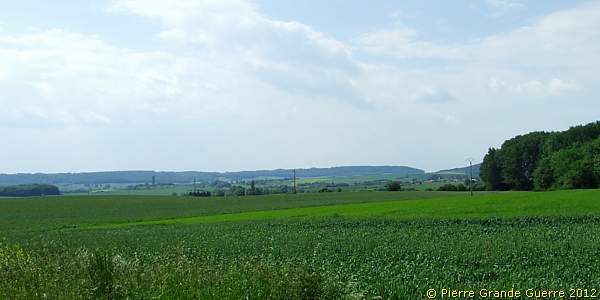
On a height, called le Reichacker, towers the Memorial for the 29e and 30e Divisions d'Infanterie .

Every stone cross in the base symbolizes a unit involved in the combats around Bidestroff ( German: Biedersdorf ). Each cross possesses a carved abbreviation of a unit.
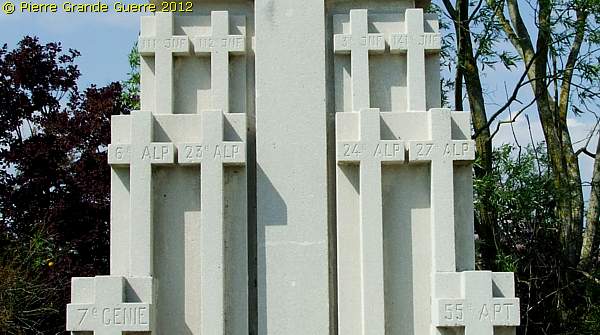

If you ever pass this memorial, take some time to study also the interesting rear side of the base of this memorial.
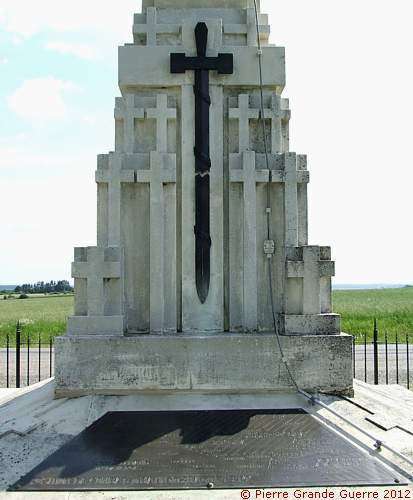
Beneath the bronze sword a bronze plaque offers an interesting map of the battlefield. It mentions also the numbers of the German and French units, involved in the combats here around Bidestroff.
View from the memorial south-westward.
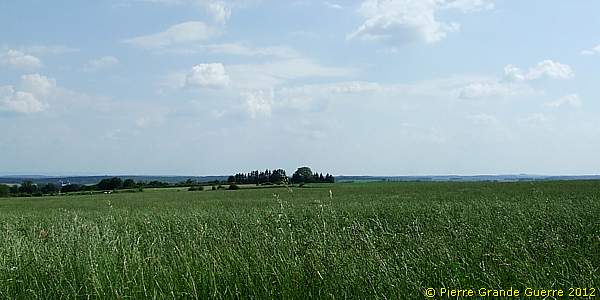
Bidestroff - 19-20 August 1914
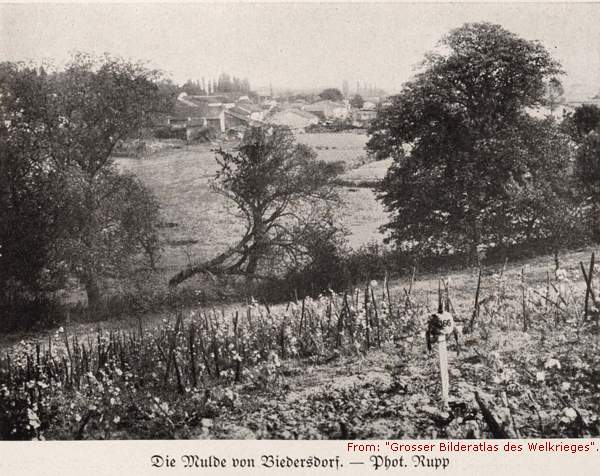
Supported by artillery, units of the 29e D.I. , the 6e B.C.A., the 112e and 141e R.I., occupied on 19 August the village of Bidestroff and positioned themselves on a line, some 3 km. to the north.
In the morning of 20 August the Bavarians attacked this sector of Dieuze - Bisping. The units of the German 42nd Infantry Division occupied Bidestroff .
North of Cutting the Bavarian 11th Infantry Reserve Brigade attacked parallel to the D38 in the direction of Dieuze. The B.R.I.R. 10 attacked Cutting and the junction of L'Esperance decimating the French 32e D.I. and other units of the 63 B.I.
The 1st Bavarian Reserve Infantry Brigade attacked Bisping , where the French 61e B.I. positioned itself the day before. The Bavarians needed two massive attacks to succeed to overpower the French around 16.00 hrs. From here the Bavarians would rapidly chase the French troops south-westward to the border.
This map detail below shows the positions at 6 o'clock , just before of the Bavarian attacks of 20 August in this area.
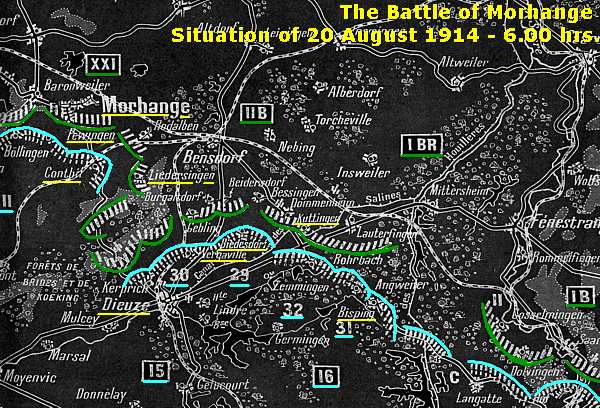
View from le Reichacker to the village of Bidestroff.
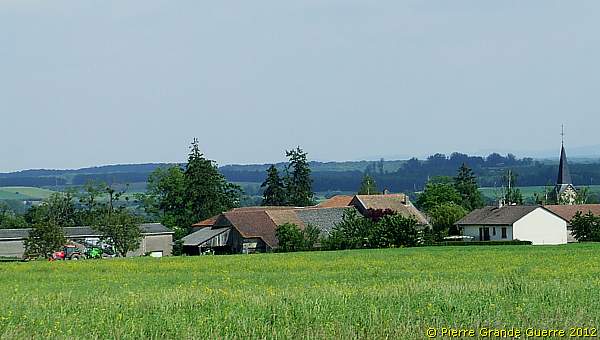
We pass through Bidestroff southward to go left at the junction ...
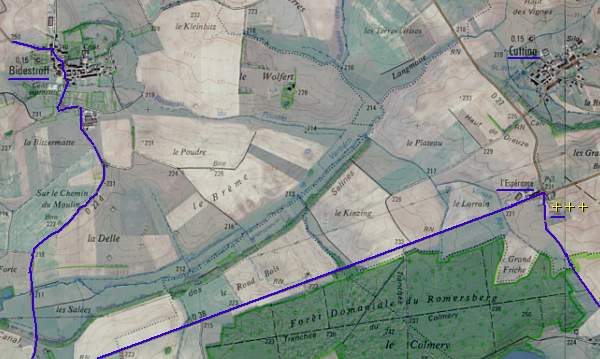
... of la Providence to continue eastward over the D 38 to ...
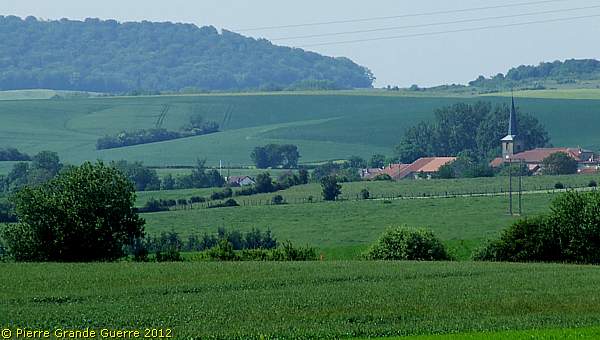
... a junction south of Cutting , called l'Espérance. We park our car to visit the Nécropole Nationale of Cutting.
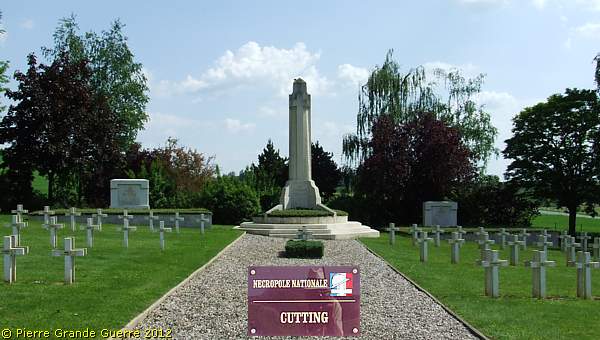
The
Nécropole
Nationale of Cutting
contains the human remains
of 813 men.
There are 273 individual graves and two communal graves, together containing
the human remains of 540 men.
The officers and soldiers, buried here, fell in the area around the
cemetery during the period of 20 - 23 August 1914.
During the early war period the French Army lost many officers, even generals. This is the grave of Général Commandant Paul Diou, Commander of the 63e Brigade d'Infanterie, ...

... who was wounded on this battlefield near Cutting, and who died of his wounds on 23 August 1914 in Dieuze.
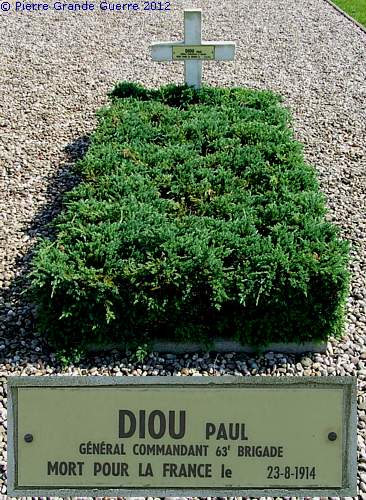
The inscription on the memorial behind the grave.
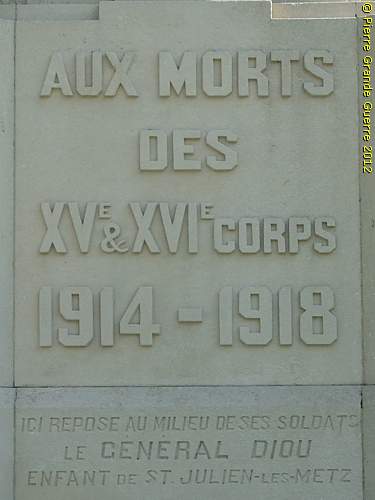
The left communal grave contains the human remains of 257 officers and soldiers, of whom 254 (!) are unknown.
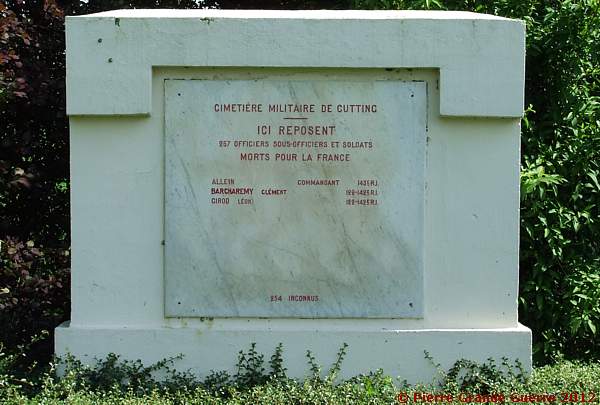
The right ossuary contains the human remains of 283 officers and soldiers, of whom 280 are unknown.
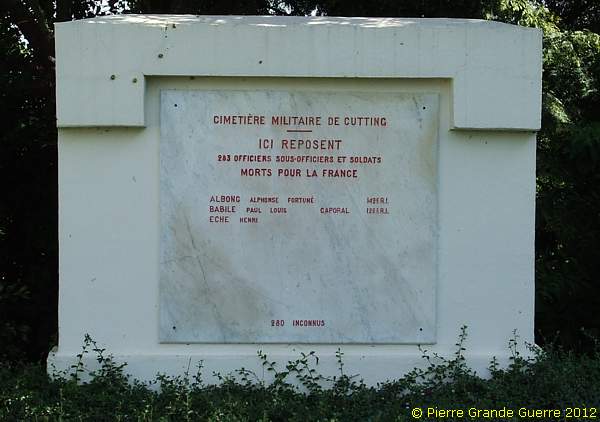
From the junction at l'Esperance we continue south-eastward to the community of les-Belles-Forêts, to Bisping .
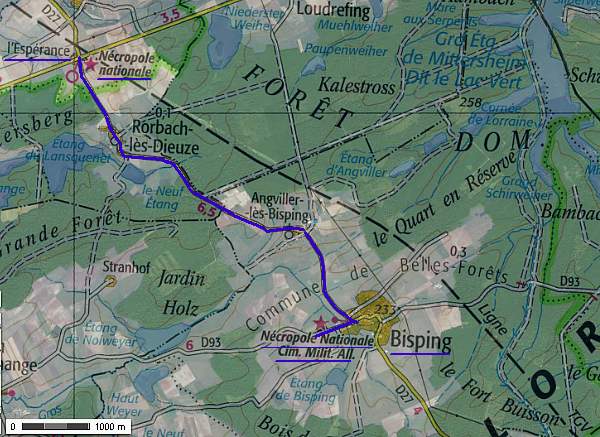
Here we visit the Franco-German Nécropole Nationale of Bisping , which possesses two separate plots, a German and a French plot.
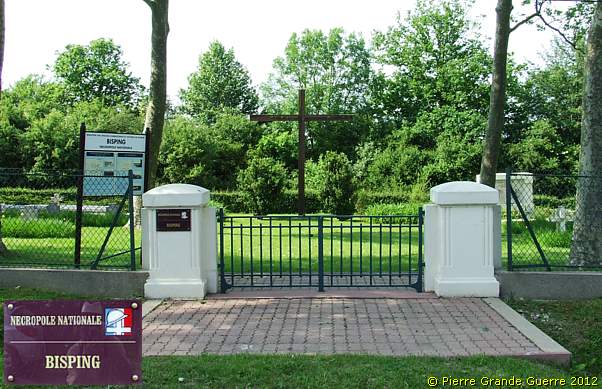
View from one of the two German communal graves in the direction of the French plot.
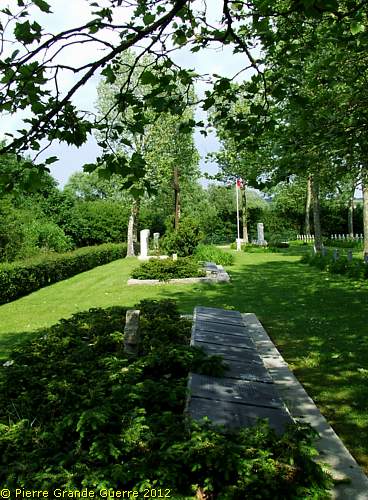
We will first visit the German plot.

There are 70 individual graves and two communal graves, together containing the human remains of 528 men of whom 134 are unknown.
The officers and soldiers, buried here, were killed during all periods of the war, but the large majority of them fell in the area around the cemetery during the period of 20 - 23 August 1914.
The Franco-German War Cemetery Bisping was created by the Germans in April 1915 for the German and French dead from the combats in and around Bisping during the period of 20 - 23 August 1914. Later in the war victims were added from the defensive battles against the attacking French forces during the trench warfare period of 1915 - 1918. The soldiers and officers, buried here, belonged to units, whose home base was predominantly in Bavaria, but also in Alsace, Lorraine, Württemberg and Mecklenburg. After the war, the French military authorities transferred more human remains from local areas, where these soldiers had temporarily a makeshift grave.
Many graves bear the date of 20 August 1914.
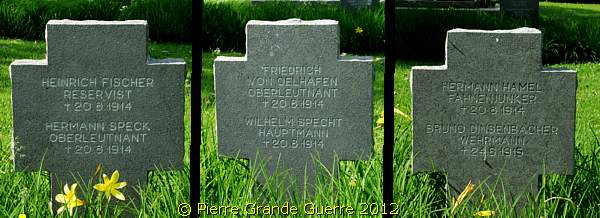

The right German mass grave.
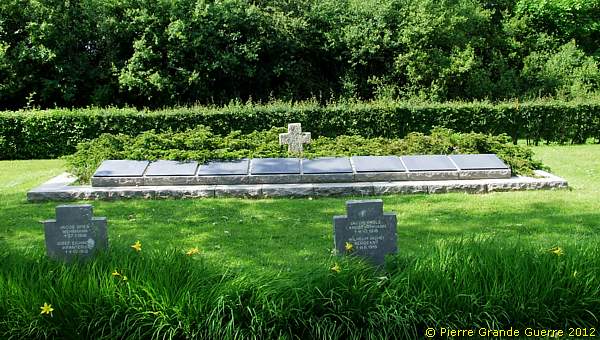
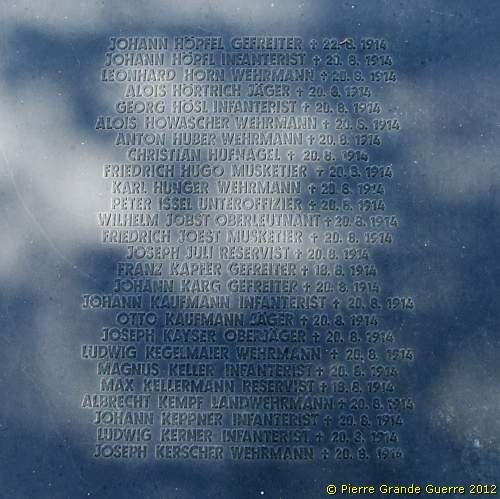
We step over from the German plot to the French plot.
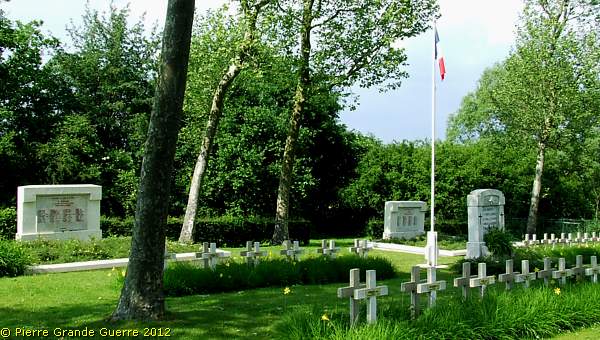
The
Nécropole
Nationale of Bisping
contains the human remains of 392
men.
There are 50 individual graves and two communal graves, together containing
the human remains of 342 men.
The officers and soldiers, buried here, were killed during all periods of the war, but the large majority of them fell in the area around the cemetery during the period of 18 - 20 August 1914.
After the war, the French military authorities transferred more human remains from local areas, where these soldiers had temporarily a makeshift grave.
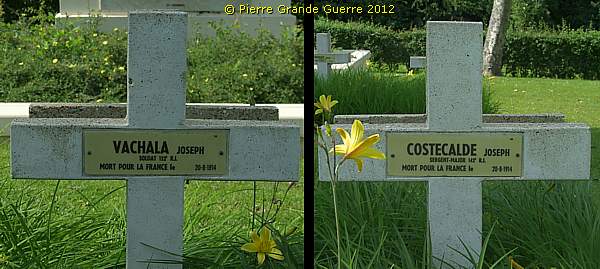
The left ossuary contains the human remains of 145 officers and soldiers, of whom 101 are unknown.
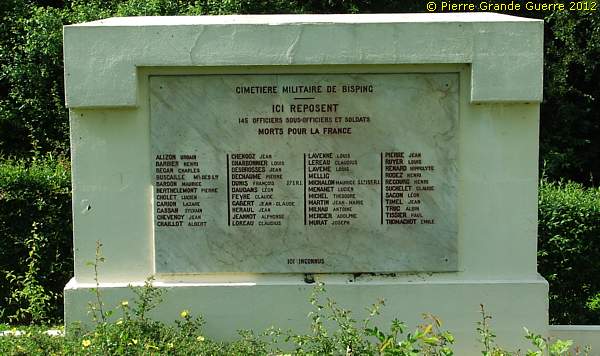
The right ossuary contains the human remains of 185 officers and soldiers, of whom 137 are unknown.
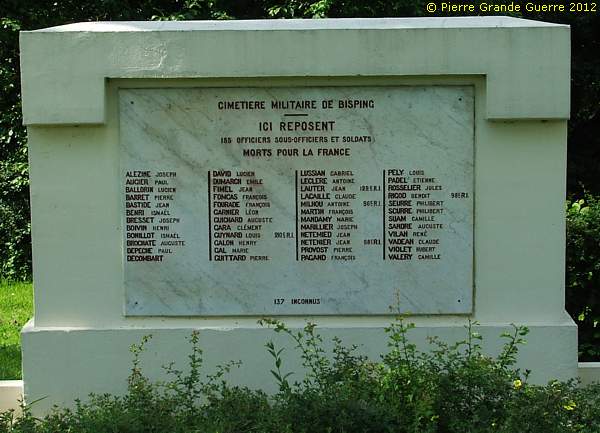
The modest memorial to commemorate the 16th Army Corps.
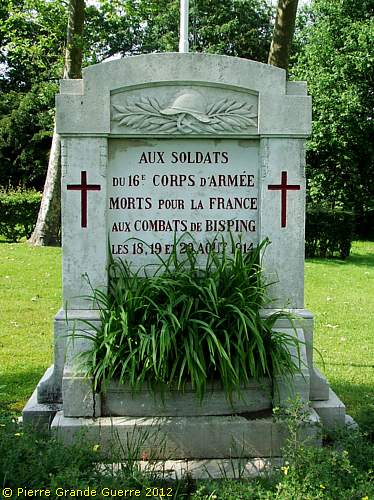
From Bisping we follow in one giant leap the high-speed advance of the Bavarians westward to one of the locations along the French border, where they would stop their hunt of the French troops, the French border town of Nomeny and to the next village of Mailly-sur-Seille.
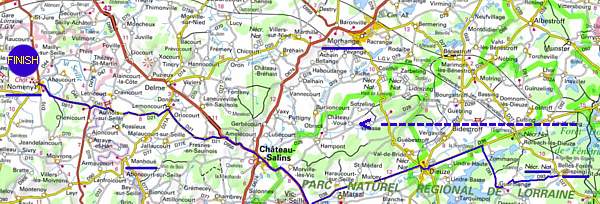
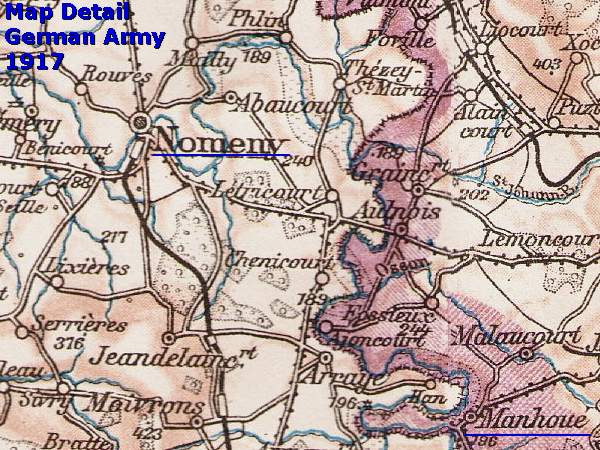
In the centre of Nomeny at the roundabout on the east side of the Seille river along the Rue Georges Clemencau...
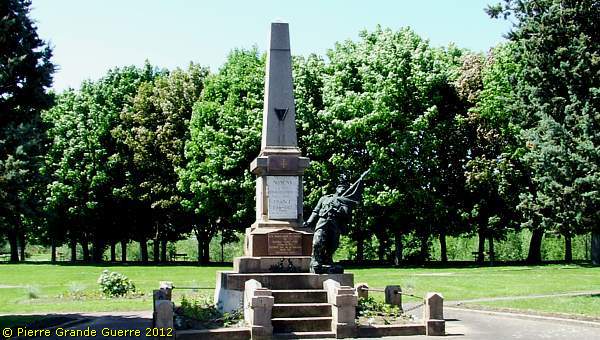
... we find this memorial with a statue of a mortally wounded Chasseur Alpin ensign-bearer.
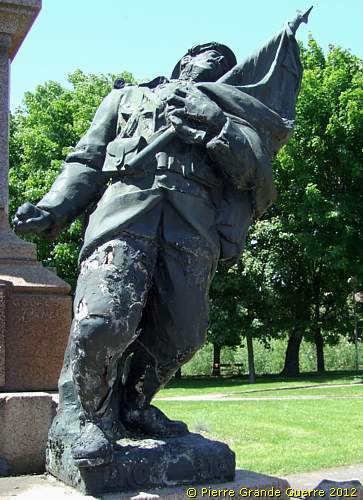
On the western side of the Seille, over the bridge, is another memorial commemorating the events of 20 August 1914.
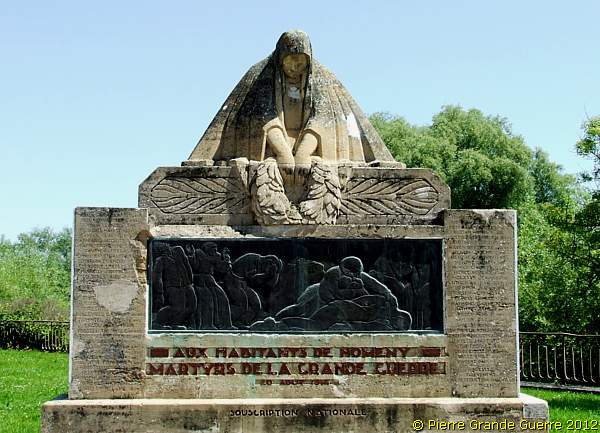
Nomeny - 20 August 1914
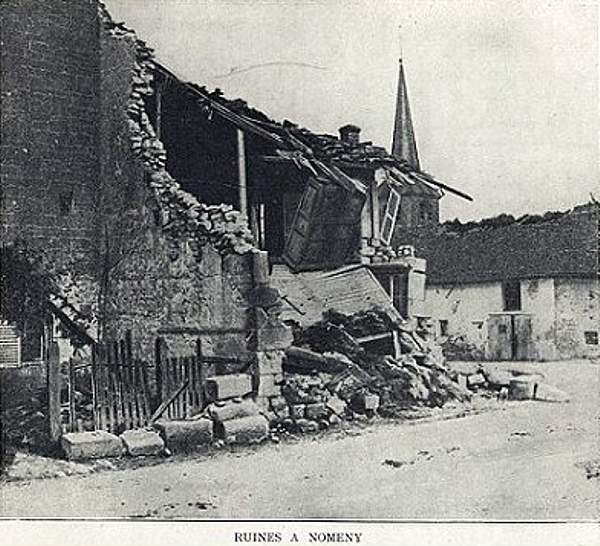
On 20 August 1914 units of B.I.R. 2, B.I.R. 4 and B.I.R. 8 bombarded Nomeny, invaded the town, burned it down, and killed 55 civilians.
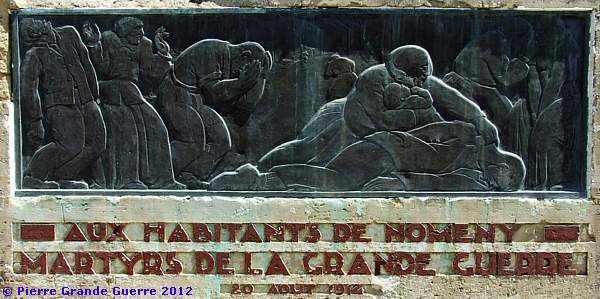

From this memorial we continue northward, parallel to the river, to the junction of the D 913 the D 44. Here we find this post-war demarcation stone, which symbolizes the farthermost point of the German advance.
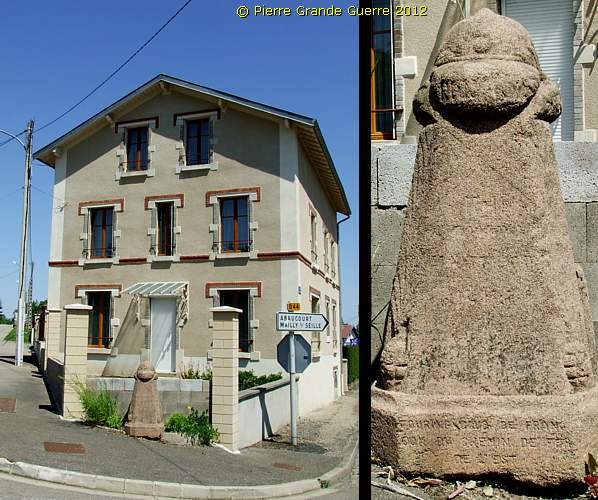
We continue north-eastward via the D44 to Mailly-sur-Seille on the west bank of the meandering Seille. In the village we find some concrete relics of the German presence after 20 August 1914; a large 1915 shelter bunker.

In a private garden stands a bunker with a concrete breastwork around it.

And on the western side of the village we find this German observation tower, fortified with 1915 concrete.
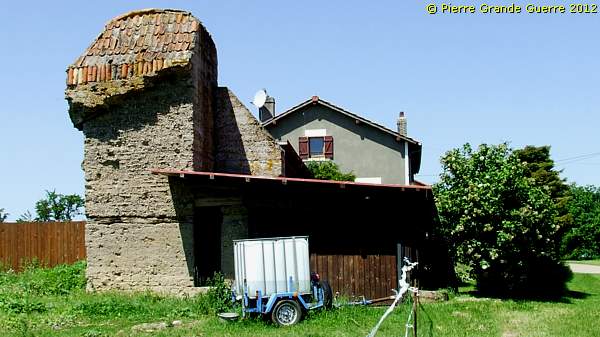
With these two last views of the observation post we finish here at Mailly-sur Seille our tour over the battlefields of the Battle of Morhange and the successful Bavarian counter offensive, “Die Schlacht in Lothringen”.
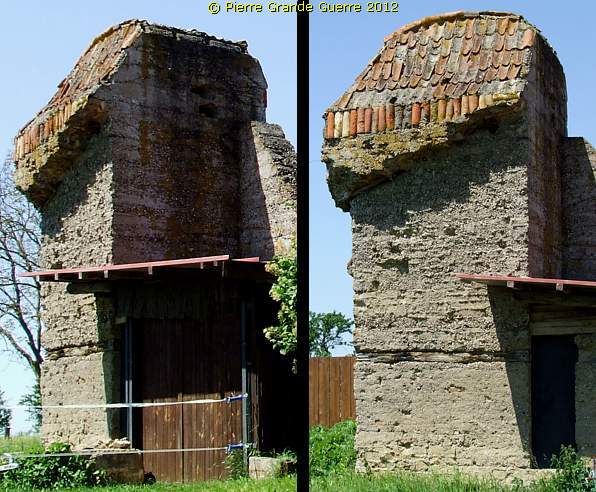
Continue to: " Lanfroicourt – Nomeny - Monument du Grand Couronné "
